Those who wish to catch big pike better come prepared. Contrary to popular opinion, a mere “Petri Heil!” won’t do the trick. Success hinges on many variables. Across forums, opinions on the best time of day to catch northern pike range from
- “morning”
- to “evening,”
- “always” or
- “in autumn, only between 11-15 o’clock.”
Of course, we all know that these answers have their origin in subjectivity on one hand and on the other on fishermens tales. So let’s approach this matter from a scientific perspective. Luckily quite a few studies have explored this subject.
Table of Contents:
- Anglers consult science: These are the best days to fish for pike
- Why you can’t catch a pike every day?
- In which seasons do pike feed most? (And do they feed more in winter?)
- What month is best for pike?
1. Anglers consult science: These are the best days to fish for pike
Kuparinen, Klefoth and Arlinghaus explored to what degree the environment impacts the catch rate of pike — which effects increase or decrease our chances? Variables such as
- time of day,
- length of day,
- water temperature,
- season (like for example for spring pike fishing),
- moon phase,
- wind speed,
- and more,
were tracked in relation to the catch rate. The study was conducted at “Kleiner Döllnsee” in Germany. This is a mesotrophic lake with 68 ac (25 ha) in size and with a maximum depth of 25.6 ft (7.8 m).
Those of us who take care of environmental factors can increase their catch rate dramatically. Sadly, in the recreational fishing area, hardly any of us does so. To a large degree, this is caused by the fact that no reliable data sets and analyses are available.
Actually, the study at “Kleiner Dölnsee” of the year 2005 is the first time reliable data that was recorded and analyzed catching pike in a lake. The study was commisioned by the Finnish University of Helsinki, the German institutes “Leibniz Institute for Aquatic Ecology and Freshwater Fishery,” and the “Department of Crop and Animal Sciences.” One of the most intriguing results of the study is the finding of a strong correlation between moon phases and the biting behavior of pike.
-
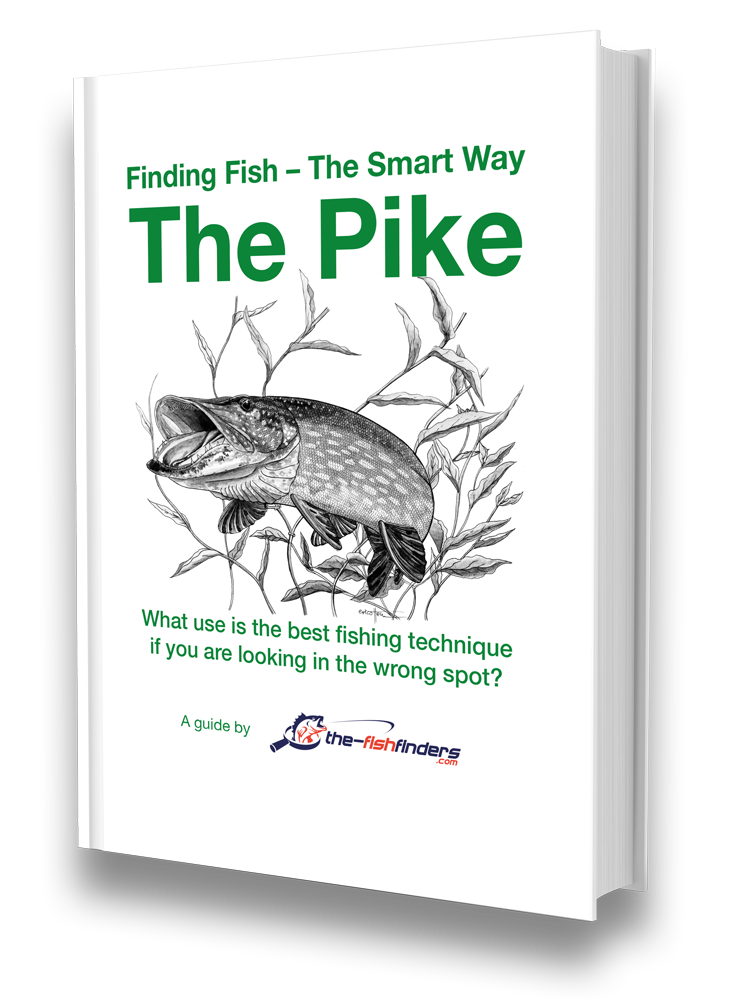
Finding Fish The Smart Way – The Pike
Download 40 pages now for free
This article is an excerpt from:
Reviews ( 64 )
The pike catches of 25 anglers across 94 fishing days were included and evaluated as part of the study.
- A population of 544 pike lives in lake “Kleinen Dölnsee”.
- Use of artificial pike baits.
- Free choice of fishing spots.
Here are the results
 What’s the best time to fish for pike?
What’s the best time to fish for pike?
Most pike were caught during the new and full moon phases and at dusk (morning and evening). Scientists suspect that at dusk prey fish enter the open water, giving pike a higher chance of hunting success. The high rate of pike catches at dusk could also be explained by the fact that pike, as visual predators, have a hard time distinguishing bait from fish in the dark.
One surprising finding of the study was that pike bite extremely well during full moon phases, much better than during the ones of half moon. This might be due to the altered illumination of the environment, which could cause a change in the activity of prey fish and zooplankton, forcing pike to adapt their behavior as well.
 What temperature offers the highest chance of success?
What temperature offers the highest chance of success?
The weather impacts the temperature of the water, which in turn influences the catch rate. A likely cause is that pike are hematocryal animals without a constant body temperature — a change in water temperature therefore affects their metabolism and speed of movement.
Researchers observed that outside the spawning season, the catch rate for pike is highest between water temperatures of 59 and 63 °F (15 and 17 °C). At temperatures of 66 to 68 °F (19 to 20 °C), the activity of pike decreased sharply. The researchers did not rule out that in warmer waters, our pike baits have to compete with natural prey, the excessive food supply thus causing a decrease in catches.
Shortly after the spawning season in spring, the optimal water temperature for pike fishing was around 57 °F (14 °C), as pike were hunting more frequently to replenish strained reserves.
 Many anglers on the lake
Many anglers on the lake
The catch rate decreases when waters are heavily fished. This is caused by a general reduction in the fish population. In principle, the catch rate depends on whether the pike are overfed — how much prey is available? If the fish stock is abundant, the pike are overfed and bite less. Therefore, the best days to catch a pike are when there is little food.
 Wind and weather
Wind and weather
The catch rate for pike fishing increased starting at a wind speed of 6 mph (10 km/h). The stronger the breeze, the higher the chance of success. Wind causes turbidity, affecting the prey’s vision.
You may use these findings to your advantage, only heading out to fish under optimal weather conditions. Cloudy and windy days promise the most success to catch a pike fast. On sunny and calm days, plenty of alternative activities to pike fishing are available. Therefore let us close wit the following statement: “If you catch a big pike on a beautiful sunny day, you are a true master of your trade!”
Remember
Now, you know when it pays off to fish for pike. Here is a short summary of the study. These seven tips should increase your odds when fishing for pike:
- Fish at new and full moon.
- Fish at dawn.
- It pays to fish in cloudy weathers with wind speeds above 6 mph (10 km/h).
- Pike feel most comfortable at water temperatures between 59 and 63 °F (15 and 17 °C).
- Pike replenish their reserves after the spawning season.
- In July, pike are overfed – what results in the lowest catch rates.
- End of May and September promise the highest catch rates.
If you want to fish for a pike, follow these guidelines and stack the odds in your favor.
-

Finding Fish The Smart Way - The Pike
Download 40 pages now for free
This article is an excerpt from:
Reviews ( 64 )
Martin
Hi Garry, i saw that contacting Jens has solved your problem. As written in the Order Mail, download is limited to 3 times. We introduced the limit to prevent fraud. However, if you lose your eBook in the future, please email us and you will of course get new downloads. Martin- Rated 1 out of 5
Garry Gregg
I bought the book online, but try as I might it would not save on my iPad mini 3, from the small amount i was able to read it looked very good. I was given a link that was promised to ALWAYS be available to me, but this was not the case! I wanted to learn how to find Pike in Lough Neagh, the largest lake in the U.K. but I can only fish it blind, useless. Make sure you can save this book BEFORE you buy. - Rated 5 out of 5
Andreas Eden
Unlike other reviewers, I am NOT in favor of shortening or streamlining. The detailed but not generalized aspects provided are scientifically sound and outline the respective topics exceedingly well. Looking forward to more of this, and keep up the great work! Martin
Hi Claus, Thank you for the info about the Tolino. So far, there have been no problems with the popular Android or Apple smartphones and tablets. We'll take a look at it. Did the upload via the Tolino web reader not work either? Regards Martin- Rated 2 out of 5
Claus Erhard
The content is decent - maybe a little too detailed. Note: I bought the e-book version. The fact that you can't print it out is alright (this option would be great though). However, I cannot read the PDF file on my Tolino. I uploaded it 1000 times, and nothing is displayed. So reading is only possible on the PC. Too bad! - Rated 5 out of 5
Dieter Gundacker
Highly recommended, lots of fascinating information. It is not easy to put the book down once you have started reading. - Rated 5 out of 5
Kurt Sattler
Great book. I also have "The Pikeperch". Both are highly recommended. - Rated 5 out of 5
Mirko
A very well written book. - Rated 4 out of 5
Holzblinker
Among the advantages: -statistics and their interpretation -written in a simple and understandable way Among the disadvantages: -advertising -A lot of generally known information - Rated 3 out of 5
Bruno
Exciting content (****) with a tendency to be long-winded (**) - Rated 5 out of 5
Stefan
The book keeps what it promises. An all-around great book that stands out from the rest. The purchase was worth it! - Rated 5 out of 5
Fischfreund
A truly superb book. I also own the book on pikeperch and have to admit that they are two completely different books. There are very few overlaps, so I never had the feeling that I already knew a passage in the book. For this reason, I can unreservedly recommend the pike book. It was so much fun reading it and gradually learning more about the pike. - Rated 5 out of 5
Paul KraUS
An elaborate approach to the behavior of the fish to conclude your fishing behavior, etc. I also like that other professional opinions are taken into account and partly questioned and analyzed. You can learn a lot to save the one or the other unsuccessful day. Thank you! - Rated 5 out of 5
barney1at
I am impressed with the book! I have read many books about fishing, and this was by far the best. It reflects not only the experiences and interpretations of the authors but uses scientific studies as a basis. Some of the findings knocked my socks off, e.g., the distance of attention of the pike. Strong recommendation for anyone who wants to improve their pike fishing skills! - Rated 5 out of 5
Michael Hügel
Sehr gutes Buch hat mir weitergeholfen das Leben des Hechtes zu verstehen. - Rated 5 out of 5
frankadam67
Sehr, sehr schönes Buch mit vielen Informationen! Nun muss ich nur noch alles in die Tat umsetzen! Danke für das gut ausgearbeitete Buch! - Rated 5 out of 5
Thomas Asamer
Bin gerade am Lesen des Buches. Sehr interessant und informativ. Werde meine Hechtfänge sicherlich noch um einiges steigern können mit dem KnowHow des Buches! Weiter so!? - Rated 5 out of 5
Andre Scholz
Hallo Zusammen, ich kann nur sagen, das habt ihr wirklich sehr gut gemacht! Wahnsinnig informativ, Super gegliedert und mit vielen guten Tipps behaftet. Das Zanderbuch war schon ein Knaller!!! Ich freu mich schon auf das Barschbuch. Und nebenbei erwähnt, die Videolektionen Köderkurs 1 sind ebenfalls Mega spannend! Bitte weiter so machen.... Petri Andre - Rated 5 out of 5
Manfred Parbs
Ich finde die Bücher '' Der Hecht '' sowie '' Der Zander '' sind für erfahrene Angler und auch für den Anfänger sehr lehrreich und somit auch informativ gestaltet. Auch die vielen Tips haben mich persönlich schon so manches mal vor einem Schneidertag bewahrt. Ich besitze zudem auch noch das Buch '' Der grosse Echolotratgeber '' . Dieses Buch liefert gute Erklärungen für die Funktionen und Einstellungen von Echoloten. Desweiteren besitze ich auch noch zwei Angelkurse: zum einen Köderfarbe und zum anderen Der Deeper. Beide Kurse sind mit sehr viel Informationen und verständlichen Erklärungen gespickt die jederman sehr gut verstehen kann. Freue mich schon auf weitere Bücher. Ein grosser Dank als auch ein grosses Lob an das Fischfinderteam. Petri Heil & immer dicke Fische Manfred Parbs - Rated 4 out of 5
Fabius Voigt
Klasse Buch! Fundiertes Wissen auf gute Art und Weise zusammengefasst und übermittelt, damit Angler ihren Zielfisch besser verstehen. An einigen Ecken im Buch, wäre ein weitere genauere Ausarbeitung toll gewesen (wurde vom Autor aber selbst bemerkt und begründet). Desweiteren beruhen die meisten Angaben (90%) von Hechten aus Seen und leider nur sehr wenig aus Flüssen. Das sind meiner Meinung nach die einzigen Sachen die fehlen, aber ansonsten würde ich es als Bereicherung für jeden Angler beschreiben! - Rated 5 out of 5
Julia
Genau wie das Zanderbuch wieder der totale Hammer! Wobei für mich die Voraussetzungen etwas anders waren: Während ich meine Zanderfänge wirklich mal dringend etwas ankurbeln musste, fing ich alleine im vorigen Jahr 47 Hechte, es ging hier also eher um Optimierung. Und das ist voll gelungen! Massen von überaus hilfreichen Forschungsergebnissen, Statistiken und Tafeln. Ich bin beim Spinnangeln bisher zu viel gewandert und habe die einzelnen Spots zu kurz beangelt, das weiß ich jetzt. Und so ganz nebenbei ist mir jetzt noch klar, weshalb man in einigen durchaus interessanten Seen in meiner Umgebung von Juni bis Januar partout keinen Fisch fängt. Habe nämlich so einiges über die Schichtung gelernt, und dass eine Abkühlung eben nicht automatisch gleich Verbesserung bedeutet. Klasse! Her mit dem nächsten Buch bitte! - Rated 5 out of 5
Pascal Schlenker
Top nicht das letzte Buch für mich.... - Rated 5 out of 5
Heinz-Otto Schoel
Auf den 50zig Seiten, die ich bis jetzt gelesen habe ,bin ich begeistert. Aber die anderen Bücher über das Echolot und dem Zander waren sehr lehrreich. Weiter so. Freue mich schon auf das Barschbuch. - Rated 5 out of 5
Andreas Hillers
Modernes Fischen - Der Hecht. Ein sehr gut geschriebenes Buch. Bin begeistert von den vielen tollen Hilfestellungen. Sogar als erfahrener Angler kann hier bestimmt jeder noch den ein oder anderen Tipp für sich nutzen. Vielen lieben Dank, und weiter so für vielleicht weitere noch nicht erschienene Bücher über den Aal, Barsch, Karpfen etc. - Rated 5 out of 5
Stephandargel
Das Buch ist einfach nur klasse super beschrieben sehr verständlich beschrieben kann ich nur weiter empfehlen ? gebe dem Buch und dem Autor ne 1+ - Rated 5 out of 5
Rolf Wilde
Sehr praxisnah und auch mit viel Hintergrundinformationen gefülltes Buch. Ich habe über die Feiertage die ersten Seiten verschlungen. Sehr viele Details die ich noch bis zur Schonzeit versuche umzusetzen. - Rated 5 out of 5
Blankmaster
Die Referenz. Umfassend, kein blabla, über den Tellerrand hinausschauend, fundiert, sinnvolle und gut gemachte Graphiken, und das Ganze zu allem Überfluss auch noch unterhaltsam geschrieben. Als bekennender Wenigleser habe ich das Buch innerhalb von 3 Tagen einmal komplett durchgelesen. Uneingeschränkte Kaufempfehlung. - Rated 5 out of 5
Rudolf Knopf
Endlich ein Buch, welches man durchaus als Fachliteratur beschreiben kann. Es werden viele Erfahrungen, welche ich beim meiner Suche nach dem Hecht gemacht habe, bestätigt. Ebenso ist auch sehr viel Neues für mich in dem Buch, was ich bisher in meiner vieljährigen Anglerlaufbahn so nicht gewust habe. Absolute Kaufempfehlung. - Rated 5 out of 5
markus s
Großes Kompliment zum Buch! Ich fische seit meiner Kindheit auf Hecht (und das sind schon mehr als dreißig Jahre) und ich muss sagen, es gibt keine interessantere Lektüre zum Hecht! Viele eigene Theorien finde ich hier bestätigt, aber noch besser: Dieses Buch bietet auch wirklich neue Ansätze! - Rated 5 out of 5
Mitja
Beeindruckende Leistung von Euch, ein so komplexes Thema derart runterzubrechen, daß man das Buch in einem Rutsch durchlesen kann, ohne sich dauernd zu fragen: „verdammt, wovon labern die denn da?“ Superspannend: die Trophieklassifizierung und die Sache mit der Sprungschicht! Ich sehe meine Gewässer jetzt mit ganz anderen Augen und auf einmal kommen mir die 150 Kracher für das Anaconda-GTM gar nicht mehr so übertrieben teuer vor! Und weil es mir so gut gefallen hat, zieh ich mir morgen direkt das Echolot-Buch rein, das mit der Postbote heute morgen in den Kasten geworfen hat....für das Barschbuch hätte ich übrigens gerne einen Gutscheincode 🙂 Danke! Ich freu mich auf weitere spannende Lektüre aus eurem Stall... - Rated 5 out of 5
schoenfeld.oli
Absolut feine Lektüre. Ich gehe nach Lesen des Buches ganz anders ans Wasser. Zwischendrin etwas fader Stoff, der aber einfach dazu gehört. Dafür sind die spannenden Themen so spannend, dass ich nicht im Sitzen lesen konnte. - Rated 5 out of 5
Robert Häusler
Die beiden Autoren Martin Jacobs und Jens Biegemeier sind der Hammer. Ich habe schon viel gut recherchierte Medizinbücher gelesen und oft haben sie mir zu mehr Erfolg verholfen, dass das auch mal Zum Hechtangeln möglich wird ist großartig. Danke an dieses Meisterwerk! Ich habe mit dem Wissen aus dem Buch jetzt schon meinen Angelrekord auf Hecht gebrochen und bin mir sicher da geht noch was. Danke für eure Arbeit, den Fleiß und die Begeisterung die ihr geleistet haben müsst dieses moderne Fische finden für uns und unsrer Seekrokodiele zu ermöglichen. Petri Robert Häusler Martin
Edi, wir danken Dir und wünschen euch gute Fänge. Petri Martin vom Fischfindertestteam- Rated 5 out of 5
Edi Brader
Das beste Buch über die Fischerei auf Hecht, das ich bisher in Händen gehalten habe! Sehr ausführlich und praxisnah wird dem Einsteiger in diese Fischerei veranschaulicht worauf es ankommt und auch der eingefleischte Hechtprofi kann noch sehr viel Nützliches aus diesem Buch herausholen! Absolut EMPFEHLENSWERT! Besonders möchte ich das äußerst nette Team loben! Bei meiner Bestellung ging etwas schief, ich bekam zwei anstatt nur einer Ausgabe. Nach Rücksprache bedankten sie sich für die Information und sagten mir, dass das Zurücksenden ohnehin zu teuer wäre und ich das zweite Exemplar auch behalten dürfte. Danke Jungs, ihr habt gerade einem befreundeten Jungangler eine große Freude gemacht, ich werde euch auf jeden Fall weiterempfehlen! Macht weiter so! Petri Heil Edi Brader - Rated 5 out of 5
lusox
Prima Lektüre , wirklich zu empfehlen ! Besonders gut fand ich das Kapitel mit der Ködergröße. Ebenso das Kapitel mit den Standplätzen und die Rolle der Vegetation Ich habe viele Anregungen daraus mitgenommen und bin mal gespannt wie sich meine Hechtfänge verbessern. Weiter so ! - Rated 5 out of 5
Stefan Fischer
Ich finde, das Buch "Der Hecht" lüftete viele Geheminisse. Hatte das Buch "Der Zander" auch, alles top tock. Hoffentlich folgt das Buch auch über den Barsch, evtl. Waller/Wels. Mir fehlt die Anglerpraxis. Das Buch "Das große Echolot" ist auch klasse. Weiter studieren!!! ^^ Namaste und Petri Fischer Stefan - Rated 5 out of 5
Lasse Wiedenhöft
Wie schon beim Zanderbuch werden für alle denkbaren Situationen (Jahreszeiten, Gewässer, Wetter etc.) hilfreiche Tipps zur Strategieverbesserung gegeben. Dabei helfen die Ergebnisse aus diversen Versuchen und Tests den Hecht und sein Verhalten besser zu verstehen. Gerade die wissenschaftliche Begleitung in Kombination mit eigenen Erfahrungen hat mir schon nach wenigen Kapiteln neue Ideen vermittelt! - Rated 5 out of 5
Johann Burgstaller
Wie bereits "Der Zander", ist auch die Hechtausgabe wieder jeden Cent wert. Ein must-have für jeden Raubfischangler. Tolle Studien, jede Menge neue Erkenntnisse und enifach zu lesen. Na dann nichts wie auf zum "Der Barsch"! - Rated 5 out of 5
Barschhunter
Das Buch ist Euch wirklich super gelungen!!!!! Es ist sehr informativ und es ist für jeden etwas dabei, ob man nun Anfänger im Angeln ist oder ein erfahrener Angler ist. Man kann immer noch was dazu lernen. Für mich persönlich war das Kapitel "Jagd und Beute" sehr interessant und spannend und möchte deswegen keine einzelnen Punkt hervorheben. Macht weiter so und ich freue mich schon auf Euer nächstes Buch "Modernes Fische Finden Der Barsch" mein persölicher favorite Fisch. Dickes Petrie Barschhunter - Rated 5 out of 5
Andre Scholz
Genauso spannend und aufschlussreich wie das Zander Buch! Wenn man seinen Zielfisch besser verstehen möchte und mehr Erfolg haben will, kommt man nicht um das Buch herum! Allein die Thematik um die Wassertemperaturen, einfach irre! Volle 5 Sterne und Danke für so viel geilen Input! Petri Andre - Rated 5 out of 5
Andreas F.
Sehr schön finde ich die Aufmachung des Buches und die logisch aufbauenden Kapitel. Das Lesen macht viel Spaß. Hier treffen die Autoren genau den richtigen Ton, einen "mitzunehmen", obwohl die Grundlagen ja wissenschaftlich/biologisch sind. Es ist nicht einfach, plausibel und allgemein verständlich, verschiedene wissenschaftliche Erkenntnisse miteinander zu verknüpfen und hieraus die passenden Schlussfolgerungen zu ziehen. Das ist jedoch durchaus gelungen. Abläufe in der Natur sind nie statisch sondern unterliegen Abweichungen, es gibt aber Tendenzen. Deshalb kann es nicht immer genaue Gesetzmäßigkeiten geben. Hierauf weist das Buch in verschiedenen Kapitel immer wieder hin. Hier hätte ein grundlegender Hinweis in der Einleitung m.e. jedoch ausgereicht. Randnotiz: Ein Absatz erscheint wortgleich an zwei Stellen (S. 11, 1.Abs. und S. 15 3. Abs.). Im Ergebnis ist es ein Buch, was sogar enthusiastischen Raubfischanglern richtig weiterhilft! Meine Erwartungshaltung wurde sogar übertroffen. Ich freue mich auf euer Barschbuch! Vielen Dank! - Rated 5 out of 5
Pascal Kreutzmann
Wie die beiden Bücher zuvor hat mich auch das Buch über den Hecht mal wieder total begeistert. Unglaublich was ihr für einen Aufwand betreiben müsst um all dieses Wissen und die Studien zusammen zu tragen. Besonders interessant fand ich zb. die Frage danach wieviele Hechte sich denn in so einem Gewässer aufhalten. An wievielen Fischen man vorbei angelt. Das war echt interessant. Ebenso die Standplätze der Fische zu den verschiedenen Jahreszeiten und wie sehr vieles von der Wassertemperatur abhängt finde ich sehr Aufschlussreich. Auch über das fressen und gefressen werden kann man einiges erfahren. Jetzt ist mir klar warum der Hecht die Beute am liebsten am Kopf packt und sie möglichst schnell verschlingen muss. Tja die Themenvielfalt ist echt groß. Was mich noch interessiert hätte....wie/was sieht der Hecht durch seine Augen ? Was für Farben nimmt er wahr etc ? Aber das wäre eventuell zu speziell ?! Freue mich auf das nächste Buch! Bloß nicht nachlassen und genauso ausführlich weiter machen. Danke dafür. Ps...ich rezensiere aus Überzeugung , nicht wegen einem Gummifisch ! Grüße und Petri Pascal - Rated 5 out of 5
Ralf B.
Genauso interessant und prall gefüllt mit wertvollen Infos wie das Zanderbuch, einfach TOP! - Rated 5 out of 5
Bickes
Sehr gut strukuriert, sehr informativ, mir hat es definitiv geholfen, meine Taktik zu verbessern und selbstbewusster meine Stellen auszuwählen. - Rated 5 out of 5
opto
Habe alle 3 Bücher! Bin begeistert und dankbar!! Interessieren würde mich warum gerade der Hecht an einem Tag wie verrückt beißt und am nächsten Tag bei absolut gleichen Bedingungen am selben Ort wie ausgestorben erscheint! Interessieren würde mich auch wie der Zander als Augentier mit Sichtigkeiten unter 5cm klarkommt! (Hochwasser) Diese Fragen beschäftigen mich schon ein ganzes Anglerleben. - Rated 5 out of 5
Adrian Drzezla
Das Buch hat sehr viele Informationen über unseren Esox Lucius;). Jedes Kapitel ist sehr spannend und reichhaltig an Informationen. Nach diesem Buch habe ich meine Angelstrategie verbessern können und ich habe nun eine andere Ansicht von unserem Hecht im Wasser bekomme. Petri ! „ sehr empfehlenswert , Genau so wie die letzten Bücher von Fischfindertest“ - Rated 5 out of 5
Evgenij
Suuuper Buch, genau so wie das Zander Buch. Bin total begeistert. Sieht wie eine Doktorarbeit aus. Wissenschaftlich überprüft mit Verweisen, vielen Abbildungen und vielen praktischen Tips. Freue mich auf die neue Bücher! - Rated 5 out of 5
Daniel
Ich kann das Buch jedem Raubfischangler weiterempfehlen. Viele neue und nützliche Informationen rund um unseren Zielfisch Nr. 1. Tolle Arbeit! - Rated 5 out of 5
Jörg
Tolles Buch, hochinformativ von der ersten bis zur letzten Seite. Das Jahr des Hecht hat mir am besten gefallen. Man kann das Buch nur weiterempfehlen! - Rated 5 out of 5
Dirk Lindner
Top buch.umfangreich.logisch.sollte jeder haben.das Zander buch habe ich auch - Rated 5 out of 5
Jörg Thielke
Hoch interessant und verständlich geschrieben. In jedem Fall vollumfänglich weiterzuempfehlen. Danke Männers ? - Rated 5 out of 5
Stefan Klingbeil
Es war nicht anders zu erwarten. Nach dem Zander Buch bin ich wieder voll zufrieden.Die Bücher unterscheiden sich von anderen Büchern und Artikeln aus Zeitschriften. Mehr input brauch ich nicht. Alles erklärt und vernünftig erklärt. Ich lese wirklich nicht gerne Bücher. Aber hier ist es wie ein guter Krimi. Man kann nicht aufhören. Wir haben es alle gelesen und Diskutieren unser Wissen zusammen um es nochmal zu vertiefen. Jetzt freuen wir uns auf Der Barsch ? - Rated 5 out of 5
Jörg Rolle
Ein sehr gutes Buch so wie ich es erwartet habe nach dem ich Euer Zander-Buch gelesen habe. bin begeistert viele Tipps in Jagd und Beute,Umweltfaktoren,Lebensräume Kapitel 5.2.2 und Das Jahr des Hechtes.Habe noch nicht viel Erfahrung Hecht angeln ,das Buch hat mir viel Wissen übermittelt auch wenn ich noch nicht alles gelesen habe. Danke weiter so Petri - Rated 5 out of 5
Philipp
Kurz und knapp, Top! Wie auch bereits im Buch "Modernes Fische finden Der Zander" erneut abgeliefert. Besten Dank, macht weiter so! - Rated 5 out of 5
Ben
Glaube ich hab gerade vergessen die Sterne zu drücken! Auf jeden Fall 5 Sterne da es super verständlich geschrieben ist! Es beschreibt das Verhalten der Fische in verschiedenen Situationen und wenn man das versteht und nutzt fängt man sicher bald besser! Auch die Grafiken und Bilder vereinfachen es sehr gut. Bin sehr zufrieden und hoffe das noch eins für Barsche und Wels kommt! ?? - Rated 5 out of 5
Nico Drabner
Volle Punktzahl ?? Ein dickes Lob. Sehr schön aufgebaut. Am besten hat mir die Gewässeranalyse und die Aussage mit der Wassertemperatur gefallen, das passt zu 100% und Danke an den vielen nützlichen Tipps - Rated 5 out of 5
Kuhnert Giso
Also ich habe schon das Buch vom Zander gelesen. Und auch dieses Buch vom Hecht ist sehr Lehrreich mit vielen interessanten Kapiteln.. Ich bin noch nicht ganz durch mit dem lesen, aber ich weiß das es toll ist und mir auf alle Fälle weiter helfen wird um den ein oder anderen Hecht mehr an den Haken zu bekommen. Ich empfehle es auf alle Fälle weiter.. Und auch das nächste Buch über den Barsch werde ich mir holen. Macht weiter so fünf Sterne gibt's vom mir. LG Giso - Rated 5 out of 5
David Götze
Hallo zusammen, ich habe mittlerweile alle 3 Bücher und kann ehrlich behaupten, dass es mir beim Angeln bzw. Fische finden sehr viel gebracht hat. Vorallem das Angeln unter Einfluss der Mitwelt (Wind, Temperatur...etc) lässt mich jetzt meine Spotwahl genauer überdenken. Vielen Dank dafür und ich freu mich schon auf den Barsch ^^ Petri David - Rated 4 out of 5
Peter
absolute Empfehlung - Rated 5 out of 5
Ben
Finde das Buch sehr gut! Genau wie das Zander Buch beschreibt es worauf es ankommt... das Verhalten der Fische in verschiedenen Situationen. Es ist verständlich erklärt und die Bilder und Grafiken machen es noch einfacher zu verstehen worauf es ankommt! Weiter so! Barsch und Wels können kommen? - Rated 5 out of 5
Kantor Alfred (Hatschi)
Ich habe viele Jahre viel Zeit verschwendet weil ich den Fisch nicht immer gefunden habe, dass Buch hilft wirklich die Fische zu finden. Ich habe es nicht nur gelesen sondern auch schon teilweise am Wochenende umgesetzt und das mit Erfolg (einige schöne Hechte), vielen dank ich freue mich auf euer nächstes Werk Der Barsch. Weiter so!!! Petri Heil Hatschi - Rated 5 out of 5
Patrick
Also ich muss jetzt mal eine Lanze brechen, es gibt doch noch qualitativ hochwertige Bücher zum Thema Fisch und dann noch direkt zum Thema Hecht, in einer Qualität die ihres gleichen sucht. Selten das ich derart im „Rausch“ ein Buch gelesen habe. Hut ab und weiter so. - Rated 5 out of 5
Tacklefever
Ich war sehr positiv überrascht. Der Anfänger erhält im ersten Teil des Buches wirklich brauchbares Basiswissen vermittelt. Und der ein oder andere Profi wird vielleicht sagen: "Mache ich doch immer so". Und das ist doch das beste Lob für den ersten Teil des Buches. Aber wenn der Profi ehrlich ist, kann er wahrscheinlich schon zugeben, das ein oder andere gefunden zu haben was er vergessen hatte oder doch noch nicht wusste. Und richtig spannend für Anfänger und Profi ist der Hautteil des Buches, das Kapitel "Jahr des Hechtes". Dieser Teil hat absolut zu Recht den meisten Platz im Buch bekommen. Bei den einfach gegliederten und nachvollziehbaren Abschnitten im Jahr des Hechtes findet sicher nicht nur der Anfänger sondern auch der Profi jede Menge tolle Infos. Meine volle Buchbesprechung findet ihr unter https://www.tacklefever.de/index.php?topic=7396.0 - Rated 5 out of 5
Andreas
Wie erwartet, ein sehr gutes Buch das nicht in dem Köderwahnsinn hinterherläuft. Besonders gut gefällt mir die Analyse der Wassertemperaturbereiche passend für meine großen See in Mecklenburg. Die Gewässeranalysen passen wie die Faust auf Auge auf dieses sehr große Gewässer. Die neuen Möglichkeiten und überragenden Fänge von einigen lokalen Guides erzielt werden, welche in Großen Teilen durch die gewaltigen Technologiesprünge im Echolotbereich und Bootsnavigation begründet sind, wurde hier sehr gut zusammengefasst. Eine Pflichtlektüre für jeden der sich an die großen Gewässer mit den noch größeren Fische wagen will. Definitiv 5 Sterne, das Buch wurde auch innerhalb von 2 Nachmittagen gelesen. Danke! - Rated 5 out of 5
Wolfgang Konter
Habe das Buch heute bekommen .Dafür erstmal ein großes Danke schön an Euch . Nach dem ersten Durchblättern war ich begeistert . Habe eigentlich auch nichts anderes erwartet . "Modernes Fische finden - Der Zander" habe ich ja schon lange durch und blättere immer wieder drin rum . Beide Bücher zeugen von viel Sachverstand und Erkenntnissen , die ich so nicht erwartet hätte . Einfach super und verständlich erklärt . Jetzt will ich nur hoffen , dass noch ein Barsch Buch auf dieses Duo folgt . Petri Heil Wolfgang Konter - Rated 5 out of 5
Catchmaster
Habe das Buch heute direkt durchgelesen. Es ist gut aufgebaut und es gibt viele nützliche Tip's. Anfang Mai waren wir in Schweden auf Hecht angeln. Schade, dass ich dieses Buch nicht schon vorher hatte. Aufgrund der neuen Erkenntnis hätte ich bestimmt mehr Erfolg gehabt. An sich ein super Buch. Werde jetz die Tip's in die Praxis umsetzen. Vielen Dank für dieses Buch. - Rated 5 out of 5
Jörg Rolle
Habe das Buch Heute erhalten und sofort durchgestöbert,bin Begeistert! Sehr schöne Aufmachung, gut Gegliedert und nicht zu wissenschaftlich so das es jeder Angler verstehen kann.Habe auch schon Kapitel gefunden die mir reichlich neues und gute Tipps für meine Angelpraxis gefunden. Weiter so!!!!!!! Petri Jörg Rolle
2. Why you can’t catch a pike every day?
Pike are considered active and voracious predators – but how much or how often do they really feed? We will address this exciting question in the following section. If you know about the pike’s feeding behavior, you can adjust your fishing accordingly. This may help to catch one or two more pike.
How often do pike really feed?
Pike feed when they need energy and hunger sets in. Yes, most will not want to admit it, but pike do not eat every day nor need to eat every day. Sad but true… The following chart gives you an idea on the average time between the meals of pike.
| Time interval between feeding (days) | |
|---|---|
| Spring | 2 – 3 |
| Summer | 2 – 5 |
| Autumn | 1 – 2 |
| Winter | 10 – 40 |
At first glance, the interval between the meals of a pike is really frustrating from the point of view of an angler. While we used to assume that pike will be eager to bite every time we go fishing – and we just need to catch them at the right time of the day – reality apparently teaches us otherwise. If pike feed only every 2 – 5 days (summer), and we are on the water only occasionally on weekends, does this mean that we need a lot of luck to meet a hungry pike?
Even worse are the winter months. There are supposed to be periods when the pike doesn’t feed for 10 to 40 days? Who is supposed to catch pike like that – and most importantly: How is that supposed to work for the pike itself?
Nevertheless. With these numbers, we need to seriously think about our hobby … or to put it positively: If we now come home with empty buckets, we finally have a plausible reason for the rest of the family.
Note: If we now take a look at these figures in their entirety, we can clearly see that the pike is not such a voracious predator as it is often said to be. On the contrary, it is a very efficient eater. It manages to convert between 80 and 95% of its prey into energy.
There is also a big difference in feeding behavior between the sexes. Females have a very high energy demand in summer due to spawning in spring and feed 1.5 to 2.5 times as much as males. This is probably also the reason why females hook more often than males.
But how could the researchers determine how many days lied between the individual meals? Among other things, they could tell from the state of digestion of the fish in the stomachs of the pike. Very often, these showed large differences that indicated when the respective fish entered the stomach.
If several prey fish showed the same digestive symptoms, it could be assumed that they were hunted at about the same time. If pike hunt and eat more than one prey fish, it will happen at a more or less short interval. This short period of time can be several minutes, hours or even the following day. Once the pike is full, the longer it takes until the next hunt. How often it finally feeds, depends on
- the individual pike,
- the general conditions
- and how hungry it is.
Note: For us, this firstly means, that we need to match these biting times. And that pike secondly are unlikely to be hungry and eager throughout the whole day. Therefore we can increase the probability of successful pike fishing in summer, if we fish a spot for at least two consecutive days.
-

Finding Fish The Smart Way – The Pike
Download 40 pages now for free
This article is an excerpt from:
Reviews ( 64 )
Martin
Hi Garry, i saw that contacting Jens has solved your problem. As written in the Order Mail, download is limited to 3 times. We introduced the limit to prevent fraud. However, if you lose your eBook in the future, please email us and you will of course get new downloads. Martin- Rated 1 out of 5
Garry Gregg
I bought the book online, but try as I might it would not save on my iPad mini 3, from the small amount i was able to read it looked very good. I was given a link that was promised to ALWAYS be available to me, but this was not the case! I wanted to learn how to find Pike in Lough Neagh, the largest lake in the U.K. but I can only fish it blind, useless. Make sure you can save this book BEFORE you buy. - Rated 5 out of 5
Andreas Eden
Unlike other reviewers, I am NOT in favor of shortening or streamlining. The detailed but not generalized aspects provided are scientifically sound and outline the respective topics exceedingly well. Looking forward to more of this, and keep up the great work! Martin
Hi Claus, Thank you for the info about the Tolino. So far, there have been no problems with the popular Android or Apple smartphones and tablets. We’ll take a look at it. Did the upload via the Tolino web reader not work either? Regards Martin- Rated 2 out of 5
Claus Erhard
The content is decent – maybe a little too detailed. Note: I bought the e-book version. The fact that you can’t print it out is alright (this option would be great though). However, I cannot read the PDF file on my Tolino. I uploaded it 1000 times, and nothing is displayed. So reading is only possible on the PC. Too bad! - Rated 5 out of 5
Dieter Gundacker
Highly recommended, lots of fascinating information. It is not easy to put the book down once you have started reading. - Rated 5 out of 5
Kurt Sattler
Great book. I also have “The Pikeperch”. Both are highly recommended. - Rated 5 out of 5
Mirko
A very well written book. - Rated 4 out of 5
Holzblinker
Among the advantages: -statistics and their interpretation -written in a simple and understandable way Among the disadvantages: -advertising -A lot of generally known information - Rated 3 out of 5
Bruno
Exciting content (****) with a tendency to be long-winded (**) - Rated 5 out of 5
Stefan
The book keeps what it promises. An all-around great book that stands out from the rest. The purchase was worth it! - Rated 5 out of 5
Fischfreund
A truly superb book. I also own the book on pikeperch and have to admit that they are two completely different books. There are very few overlaps, so I never had the feeling that I already knew a passage in the book. For this reason, I can unreservedly recommend the pike book. It was so much fun reading it and gradually learning more about the pike. - Rated 5 out of 5
Paul KraUS
An elaborate approach to the behavior of the fish to conclude your fishing behavior, etc. I also like that other professional opinions are taken into account and partly questioned and analyzed. You can learn a lot to save the one or the other unsuccessful day. Thank you! - Rated 5 out of 5
barney1at
I am impressed with the book! I have read many books about fishing, and this was by far the best. It reflects not only the experiences and interpretations of the authors but uses scientific studies as a basis. Some of the findings knocked my socks off, e.g., the distance of attention of the pike. Strong recommendation for anyone who wants to improve their pike fishing skills! - Rated 5 out of 5
Michael Hügel
Sehr gutes Buch hat mir weitergeholfen das Leben des Hechtes zu verstehen. - Rated 5 out of 5
frankadam67
Sehr, sehr schönes Buch mit vielen Informationen! Nun muss ich nur noch alles in die Tat umsetzen! Danke für das gut ausgearbeitete Buch! - Rated 5 out of 5
Thomas Asamer
Bin gerade am Lesen des Buches. Sehr interessant und informativ. Werde meine Hechtfänge sicherlich noch um einiges steigern können mit dem KnowHow des Buches! Weiter so!? - Rated 5 out of 5
Andre Scholz
Hallo Zusammen, ich kann nur sagen, das habt ihr wirklich sehr gut gemacht! Wahnsinnig informativ, Super gegliedert und mit vielen guten Tipps behaftet. Das Zanderbuch war schon ein Knaller!!! Ich freu mich schon auf das Barschbuch. Und nebenbei erwähnt, die Videolektionen Köderkurs 1 sind ebenfalls Mega spannend! Bitte weiter so machen…. Petri Andre - Rated 5 out of 5
Manfred Parbs
Ich finde die Bücher ” Der Hecht ” sowie ” Der Zander ” sind für erfahrene Angler und auch für den Anfänger sehr lehrreich und somit auch informativ gestaltet. Auch die vielen Tips haben mich persönlich schon so manches mal vor einem Schneidertag bewahrt. Ich besitze zudem auch noch das Buch ” Der grosse Echolotratgeber ” . Dieses Buch liefert gute Erklärungen für die Funktionen und Einstellungen von Echoloten. Desweiteren besitze ich auch noch zwei Angelkurse: zum einen Köderfarbe und zum anderen Der Deeper. Beide Kurse sind mit sehr viel Informationen und verständlichen Erklärungen gespickt die jederman sehr gut verstehen kann. Freue mich schon auf weitere Bücher. Ein grosser Dank als auch ein grosses Lob an das Fischfinderteam. Petri Heil & immer dicke Fische Manfred Parbs - Rated 4 out of 5
Fabius Voigt
Klasse Buch! Fundiertes Wissen auf gute Art und Weise zusammengefasst und übermittelt, damit Angler ihren Zielfisch besser verstehen. An einigen Ecken im Buch, wäre ein weitere genauere Ausarbeitung toll gewesen (wurde vom Autor aber selbst bemerkt und begründet). Desweiteren beruhen die meisten Angaben (90%) von Hechten aus Seen und leider nur sehr wenig aus Flüssen. Das sind meiner Meinung nach die einzigen Sachen die fehlen, aber ansonsten würde ich es als Bereicherung für jeden Angler beschreiben! - Rated 5 out of 5
Julia
Genau wie das Zanderbuch wieder der totale Hammer! Wobei für mich die Voraussetzungen etwas anders waren: Während ich meine Zanderfänge wirklich mal dringend etwas ankurbeln musste, fing ich alleine im vorigen Jahr 47 Hechte, es ging hier also eher um Optimierung. Und das ist voll gelungen! Massen von überaus hilfreichen Forschungsergebnissen, Statistiken und Tafeln. Ich bin beim Spinnangeln bisher zu viel gewandert und habe die einzelnen Spots zu kurz beangelt, das weiß ich jetzt. Und so ganz nebenbei ist mir jetzt noch klar, weshalb man in einigen durchaus interessanten Seen in meiner Umgebung von Juni bis Januar partout keinen Fisch fängt. Habe nämlich so einiges über die Schichtung gelernt, und dass eine Abkühlung eben nicht automatisch gleich Verbesserung bedeutet. Klasse! Her mit dem nächsten Buch bitte! - Rated 5 out of 5
Pascal Schlenker
Top nicht das letzte Buch für mich…. - Rated 5 out of 5
Heinz-Otto Schoel
Auf den 50zig Seiten, die ich bis jetzt gelesen habe ,bin ich begeistert. Aber die anderen Bücher über das Echolot und dem Zander waren sehr lehrreich. Weiter so. Freue mich schon auf das Barschbuch. - Rated 5 out of 5
Andreas Hillers
Modernes Fischen – Der Hecht. Ein sehr gut geschriebenes Buch. Bin begeistert von den vielen tollen Hilfestellungen. Sogar als erfahrener Angler kann hier bestimmt jeder noch den ein oder anderen Tipp für sich nutzen. Vielen lieben Dank, und weiter so für vielleicht weitere noch nicht erschienene Bücher über den Aal, Barsch, Karpfen etc. - Rated 5 out of 5
Stephandargel
Das Buch ist einfach nur klasse super beschrieben sehr verständlich beschrieben kann ich nur weiter empfehlen ? gebe dem Buch und dem Autor ne 1+ - Rated 5 out of 5
Rolf Wilde
Sehr praxisnah und auch mit viel Hintergrundinformationen gefülltes Buch. Ich habe über die Feiertage die ersten Seiten verschlungen. Sehr viele Details die ich noch bis zur Schonzeit versuche umzusetzen. - Rated 5 out of 5
Blankmaster
Die Referenz. Umfassend, kein blabla, über den Tellerrand hinausschauend, fundiert, sinnvolle und gut gemachte Graphiken, und das Ganze zu allem Überfluss auch noch unterhaltsam geschrieben. Als bekennender Wenigleser habe ich das Buch innerhalb von 3 Tagen einmal komplett durchgelesen. Uneingeschränkte Kaufempfehlung. - Rated 5 out of 5
Rudolf Knopf
Endlich ein Buch, welches man durchaus als Fachliteratur beschreiben kann. Es werden viele Erfahrungen, welche ich beim meiner Suche nach dem Hecht gemacht habe, bestätigt. Ebenso ist auch sehr viel Neues für mich in dem Buch, was ich bisher in meiner vieljährigen Anglerlaufbahn so nicht gewust habe. Absolute Kaufempfehlung. - Rated 5 out of 5
markus s
Großes Kompliment zum Buch! Ich fische seit meiner Kindheit auf Hecht (und das sind schon mehr als dreißig Jahre) und ich muss sagen, es gibt keine interessantere Lektüre zum Hecht! Viele eigene Theorien finde ich hier bestätigt, aber noch besser: Dieses Buch bietet auch wirklich neue Ansätze! - Rated 5 out of 5
Mitja
Beeindruckende Leistung von Euch, ein so komplexes Thema derart runterzubrechen, daß man das Buch in einem Rutsch durchlesen kann, ohne sich dauernd zu fragen: „verdammt, wovon labern die denn da?“ Superspannend: die Trophieklassifizierung und die Sache mit der Sprungschicht! Ich sehe meine Gewässer jetzt mit ganz anderen Augen und auf einmal kommen mir die 150 Kracher für das Anaconda-GTM gar nicht mehr so übertrieben teuer vor! Und weil es mir so gut gefallen hat, zieh ich mir morgen direkt das Echolot-Buch rein, das mit der Postbote heute morgen in den Kasten geworfen hat….für das Barschbuch hätte ich übrigens gerne einen Gutscheincode 🙂 Danke! Ich freu mich auf weitere spannende Lektüre aus eurem Stall… - Rated 5 out of 5
schoenfeld.oli
Absolut feine Lektüre. Ich gehe nach Lesen des Buches ganz anders ans Wasser. Zwischendrin etwas fader Stoff, der aber einfach dazu gehört. Dafür sind die spannenden Themen so spannend, dass ich nicht im Sitzen lesen konnte. - Rated 5 out of 5
Robert Häusler
Die beiden Autoren Martin Jacobs und Jens Biegemeier sind der Hammer. Ich habe schon viel gut recherchierte Medizinbücher gelesen und oft haben sie mir zu mehr Erfolg verholfen, dass das auch mal Zum Hechtangeln möglich wird ist großartig. Danke an dieses Meisterwerk! Ich habe mit dem Wissen aus dem Buch jetzt schon meinen Angelrekord auf Hecht gebrochen und bin mir sicher da geht noch was. Danke für eure Arbeit, den Fleiß und die Begeisterung die ihr geleistet haben müsst dieses moderne Fische finden für uns und unsrer Seekrokodiele zu ermöglichen. Petri Robert Häusler Martin
Edi, wir danken Dir und wünschen euch gute Fänge. Petri Martin vom Fischfindertestteam- Rated 5 out of 5
Edi Brader
Das beste Buch über die Fischerei auf Hecht, das ich bisher in Händen gehalten habe! Sehr ausführlich und praxisnah wird dem Einsteiger in diese Fischerei veranschaulicht worauf es ankommt und auch der eingefleischte Hechtprofi kann noch sehr viel Nützliches aus diesem Buch herausholen! Absolut EMPFEHLENSWERT! Besonders möchte ich das äußerst nette Team loben! Bei meiner Bestellung ging etwas schief, ich bekam zwei anstatt nur einer Ausgabe. Nach Rücksprache bedankten sie sich für die Information und sagten mir, dass das Zurücksenden ohnehin zu teuer wäre und ich das zweite Exemplar auch behalten dürfte. Danke Jungs, ihr habt gerade einem befreundeten Jungangler eine große Freude gemacht, ich werde euch auf jeden Fall weiterempfehlen! Macht weiter so! Petri Heil Edi Brader - Rated 5 out of 5
lusox
Prima Lektüre , wirklich zu empfehlen ! Besonders gut fand ich das Kapitel mit der Ködergröße. Ebenso das Kapitel mit den Standplätzen und die Rolle der Vegetation Ich habe viele Anregungen daraus mitgenommen und bin mal gespannt wie sich meine Hechtfänge verbessern. Weiter so ! - Rated 5 out of 5
Stefan Fischer
Ich finde, das Buch “Der Hecht” lüftete viele Geheminisse. Hatte das Buch “Der Zander” auch, alles top tock. Hoffentlich folgt das Buch auch über den Barsch, evtl. Waller/Wels. Mir fehlt die Anglerpraxis. Das Buch “Das große Echolot” ist auch klasse. Weiter studieren!!! ^^ Namaste und Petri Fischer Stefan - Rated 5 out of 5
Lasse Wiedenhöft
Wie schon beim Zanderbuch werden für alle denkbaren Situationen (Jahreszeiten, Gewässer, Wetter etc.) hilfreiche Tipps zur Strategieverbesserung gegeben. Dabei helfen die Ergebnisse aus diversen Versuchen und Tests den Hecht und sein Verhalten besser zu verstehen. Gerade die wissenschaftliche Begleitung in Kombination mit eigenen Erfahrungen hat mir schon nach wenigen Kapiteln neue Ideen vermittelt! - Rated 5 out of 5
Johann Burgstaller
Wie bereits “Der Zander”, ist auch die Hechtausgabe wieder jeden Cent wert. Ein must-have für jeden Raubfischangler. Tolle Studien, jede Menge neue Erkenntnisse und enifach zu lesen. Na dann nichts wie auf zum “Der Barsch”! - Rated 5 out of 5
Barschhunter
Das Buch ist Euch wirklich super gelungen!!!!! Es ist sehr informativ und es ist für jeden etwas dabei, ob man nun Anfänger im Angeln ist oder ein erfahrener Angler ist. Man kann immer noch was dazu lernen. Für mich persönlich war das Kapitel “Jagd und Beute” sehr interessant und spannend und möchte deswegen keine einzelnen Punkt hervorheben. Macht weiter so und ich freue mich schon auf Euer nächstes Buch “Modernes Fische Finden Der Barsch” mein persölicher favorite Fisch. Dickes Petrie Barschhunter - Rated 5 out of 5
Andre Scholz
Genauso spannend und aufschlussreich wie das Zander Buch! Wenn man seinen Zielfisch besser verstehen möchte und mehr Erfolg haben will, kommt man nicht um das Buch herum! Allein die Thematik um die Wassertemperaturen, einfach irre! Volle 5 Sterne und Danke für so viel geilen Input! Petri Andre - Rated 5 out of 5
Andreas F.
Sehr schön finde ich die Aufmachung des Buches und die logisch aufbauenden Kapitel. Das Lesen macht viel Spaß. Hier treffen die Autoren genau den richtigen Ton, einen “mitzunehmen”, obwohl die Grundlagen ja wissenschaftlich/biologisch sind. Es ist nicht einfach, plausibel und allgemein verständlich, verschiedene wissenschaftliche Erkenntnisse miteinander zu verknüpfen und hieraus die passenden Schlussfolgerungen zu ziehen. Das ist jedoch durchaus gelungen. Abläufe in der Natur sind nie statisch sondern unterliegen Abweichungen, es gibt aber Tendenzen. Deshalb kann es nicht immer genaue Gesetzmäßigkeiten geben. Hierauf weist das Buch in verschiedenen Kapitel immer wieder hin. Hier hätte ein grundlegender Hinweis in der Einleitung m.e. jedoch ausgereicht. Randnotiz: Ein Absatz erscheint wortgleich an zwei Stellen (S. 11, 1.Abs. und S. 15 3. Abs.). Im Ergebnis ist es ein Buch, was sogar enthusiastischen Raubfischanglern richtig weiterhilft! Meine Erwartungshaltung wurde sogar übertroffen. Ich freue mich auf euer Barschbuch! Vielen Dank! - Rated 5 out of 5
Pascal Kreutzmann
Wie die beiden Bücher zuvor hat mich auch das Buch über den Hecht mal wieder total begeistert. Unglaublich was ihr für einen Aufwand betreiben müsst um all dieses Wissen und die Studien zusammen zu tragen. Besonders interessant fand ich zb. die Frage danach wieviele Hechte sich denn in so einem Gewässer aufhalten. An wievielen Fischen man vorbei angelt. Das war echt interessant. Ebenso die Standplätze der Fische zu den verschiedenen Jahreszeiten und wie sehr vieles von der Wassertemperatur abhängt finde ich sehr Aufschlussreich. Auch über das fressen und gefressen werden kann man einiges erfahren. Jetzt ist mir klar warum der Hecht die Beute am liebsten am Kopf packt und sie möglichst schnell verschlingen muss. Tja die Themenvielfalt ist echt groß. Was mich noch interessiert hätte….wie/was sieht der Hecht durch seine Augen ? Was für Farben nimmt er wahr etc ? Aber das wäre eventuell zu speziell ?! Freue mich auf das nächste Buch! Bloß nicht nachlassen und genauso ausführlich weiter machen. Danke dafür. Ps…ich rezensiere aus Überzeugung , nicht wegen einem Gummifisch ! Grüße und Petri Pascal - Rated 5 out of 5
Ralf B.
Genauso interessant und prall gefüllt mit wertvollen Infos wie das Zanderbuch, einfach TOP! - Rated 5 out of 5
Bickes
Sehr gut strukuriert, sehr informativ, mir hat es definitiv geholfen, meine Taktik zu verbessern und selbstbewusster meine Stellen auszuwählen. - Rated 5 out of 5
opto
Habe alle 3 Bücher! Bin begeistert und dankbar!! Interessieren würde mich warum gerade der Hecht an einem Tag wie verrückt beißt und am nächsten Tag bei absolut gleichen Bedingungen am selben Ort wie ausgestorben erscheint! Interessieren würde mich auch wie der Zander als Augentier mit Sichtigkeiten unter 5cm klarkommt! (Hochwasser) Diese Fragen beschäftigen mich schon ein ganzes Anglerleben. - Rated 5 out of 5
Adrian Drzezla
Das Buch hat sehr viele Informationen über unseren Esox Lucius;). Jedes Kapitel ist sehr spannend und reichhaltig an Informationen. Nach diesem Buch habe ich meine Angelstrategie verbessern können und ich habe nun eine andere Ansicht von unserem Hecht im Wasser bekomme. Petri ! „ sehr empfehlenswert , Genau so wie die letzten Bücher von Fischfindertest“ - Rated 5 out of 5
Evgenij
Suuuper Buch, genau so wie das Zander Buch. Bin total begeistert. Sieht wie eine Doktorarbeit aus. Wissenschaftlich überprüft mit Verweisen, vielen Abbildungen und vielen praktischen Tips. Freue mich auf die neue Bücher! - Rated 5 out of 5
Daniel
Ich kann das Buch jedem Raubfischangler weiterempfehlen. Viele neue und nützliche Informationen rund um unseren Zielfisch Nr. 1. Tolle Arbeit! - Rated 5 out of 5
Jörg
Tolles Buch, hochinformativ von der ersten bis zur letzten Seite. Das Jahr des Hecht hat mir am besten gefallen. Man kann das Buch nur weiterempfehlen! - Rated 5 out of 5
Dirk Lindner
Top buch.umfangreich.logisch.sollte jeder haben.das Zander buch habe ich auch - Rated 5 out of 5
Jörg Thielke
Hoch interessant und verständlich geschrieben. In jedem Fall vollumfänglich weiterzuempfehlen. Danke Männers ? - Rated 5 out of 5
Stefan Klingbeil
Es war nicht anders zu erwarten. Nach dem Zander Buch bin ich wieder voll zufrieden.Die Bücher unterscheiden sich von anderen Büchern und Artikeln aus Zeitschriften. Mehr input brauch ich nicht. Alles erklärt und vernünftig erklärt. Ich lese wirklich nicht gerne Bücher. Aber hier ist es wie ein guter Krimi. Man kann nicht aufhören. Wir haben es alle gelesen und Diskutieren unser Wissen zusammen um es nochmal zu vertiefen. Jetzt freuen wir uns auf Der Barsch ? - Rated 5 out of 5
Jörg Rolle
Ein sehr gutes Buch so wie ich es erwartet habe nach dem ich Euer Zander-Buch gelesen habe. bin begeistert viele Tipps in Jagd und Beute,Umweltfaktoren,Lebensräume Kapitel 5.2.2 und Das Jahr des Hechtes.Habe noch nicht viel Erfahrung Hecht angeln ,das Buch hat mir viel Wissen übermittelt auch wenn ich noch nicht alles gelesen habe. Danke weiter so Petri - Rated 5 out of 5
Philipp
Kurz und knapp, Top! Wie auch bereits im Buch “Modernes Fische finden Der Zander” erneut abgeliefert. Besten Dank, macht weiter so! - Rated 5 out of 5
Ben
Glaube ich hab gerade vergessen die Sterne zu drücken! Auf jeden Fall 5 Sterne da es super verständlich geschrieben ist! Es beschreibt das Verhalten der Fische in verschiedenen Situationen und wenn man das versteht und nutzt fängt man sicher bald besser! Auch die Grafiken und Bilder vereinfachen es sehr gut. Bin sehr zufrieden und hoffe das noch eins für Barsche und Wels kommt! ?? - Rated 5 out of 5
Nico Drabner
Volle Punktzahl ?? Ein dickes Lob. Sehr schön aufgebaut. Am besten hat mir die Gewässeranalyse und die Aussage mit der Wassertemperatur gefallen, das passt zu 100% und Danke an den vielen nützlichen Tipps - Rated 5 out of 5
Kuhnert Giso
Also ich habe schon das Buch vom Zander gelesen. Und auch dieses Buch vom Hecht ist sehr Lehrreich mit vielen interessanten Kapiteln.. Ich bin noch nicht ganz durch mit dem lesen, aber ich weiß das es toll ist und mir auf alle Fälle weiter helfen wird um den ein oder anderen Hecht mehr an den Haken zu bekommen. Ich empfehle es auf alle Fälle weiter.. Und auch das nächste Buch über den Barsch werde ich mir holen. Macht weiter so fünf Sterne gibt’s vom mir. LG Giso - Rated 5 out of 5
David Götze
Hallo zusammen, ich habe mittlerweile alle 3 Bücher und kann ehrlich behaupten, dass es mir beim Angeln bzw. Fische finden sehr viel gebracht hat. Vorallem das Angeln unter Einfluss der Mitwelt (Wind, Temperatur…etc) lässt mich jetzt meine Spotwahl genauer überdenken. Vielen Dank dafür und ich freu mich schon auf den Barsch ^^ Petri David - Rated 4 out of 5
Peter
absolute Empfehlung - Rated 5 out of 5
Ben
Finde das Buch sehr gut! Genau wie das Zander Buch beschreibt es worauf es ankommt… das Verhalten der Fische in verschiedenen Situationen. Es ist verständlich erklärt und die Bilder und Grafiken machen es noch einfacher zu verstehen worauf es ankommt! Weiter so! Barsch und Wels können kommen? - Rated 5 out of 5
Kantor Alfred (Hatschi)
Ich habe viele Jahre viel Zeit verschwendet weil ich den Fisch nicht immer gefunden habe, dass Buch hilft wirklich die Fische zu finden. Ich habe es nicht nur gelesen sondern auch schon teilweise am Wochenende umgesetzt und das mit Erfolg (einige schöne Hechte), vielen dank ich freue mich auf euer nächstes Werk Der Barsch. Weiter so!!! Petri Heil Hatschi - Rated 5 out of 5
Patrick
Also ich muss jetzt mal eine Lanze brechen, es gibt doch noch qualitativ hochwertige Bücher zum Thema Fisch und dann noch direkt zum Thema Hecht, in einer Qualität die ihres gleichen sucht. Selten das ich derart im „Rausch“ ein Buch gelesen habe. Hut ab und weiter so. - Rated 5 out of 5
Tacklefever
Ich war sehr positiv überrascht. Der Anfänger erhält im ersten Teil des Buches wirklich brauchbares Basiswissen vermittelt. Und der ein oder andere Profi wird vielleicht sagen: “Mache ich doch immer so”. Und das ist doch das beste Lob für den ersten Teil des Buches. Aber wenn der Profi ehrlich ist, kann er wahrscheinlich schon zugeben, das ein oder andere gefunden zu haben was er vergessen hatte oder doch noch nicht wusste. Und richtig spannend für Anfänger und Profi ist der Hautteil des Buches, das Kapitel “Jahr des Hechtes”. Dieser Teil hat absolut zu Recht den meisten Platz im Buch bekommen. Bei den einfach gegliederten und nachvollziehbaren Abschnitten im Jahr des Hechtes findet sicher nicht nur der Anfänger sondern auch der Profi jede Menge tolle Infos. Meine volle Buchbesprechung findet ihr unter https://www.tacklefever.de/index.php?topic=7396.0 - Rated 5 out of 5
Andreas
Wie erwartet, ein sehr gutes Buch das nicht in dem Köderwahnsinn hinterherläuft. Besonders gut gefällt mir die Analyse der Wassertemperaturbereiche passend für meine großen See in Mecklenburg. Die Gewässeranalysen passen wie die Faust auf Auge auf dieses sehr große Gewässer. Die neuen Möglichkeiten und überragenden Fänge von einigen lokalen Guides erzielt werden, welche in Großen Teilen durch die gewaltigen Technologiesprünge im Echolotbereich und Bootsnavigation begründet sind, wurde hier sehr gut zusammengefasst. Eine Pflichtlektüre für jeden der sich an die großen Gewässer mit den noch größeren Fische wagen will. Definitiv 5 Sterne, das Buch wurde auch innerhalb von 2 Nachmittagen gelesen. Danke! - Rated 5 out of 5
Wolfgang Konter
Habe das Buch heute bekommen .Dafür erstmal ein großes Danke schön an Euch . Nach dem ersten Durchblättern war ich begeistert . Habe eigentlich auch nichts anderes erwartet . “Modernes Fische finden – Der Zander” habe ich ja schon lange durch und blättere immer wieder drin rum . Beide Bücher zeugen von viel Sachverstand und Erkenntnissen , die ich so nicht erwartet hätte . Einfach super und verständlich erklärt . Jetzt will ich nur hoffen , dass noch ein Barsch Buch auf dieses Duo folgt . Petri Heil Wolfgang Konter - Rated 5 out of 5
Catchmaster
Habe das Buch heute direkt durchgelesen. Es ist gut aufgebaut und es gibt viele nützliche Tip’s. Anfang Mai waren wir in Schweden auf Hecht angeln. Schade, dass ich dieses Buch nicht schon vorher hatte. Aufgrund der neuen Erkenntnis hätte ich bestimmt mehr Erfolg gehabt. An sich ein super Buch. Werde jetz die Tip’s in die Praxis umsetzen. Vielen Dank für dieses Buch. - Rated 5 out of 5
Jörg Rolle
Habe das Buch Heute erhalten und sofort durchgestöbert,bin Begeistert! Sehr schöne Aufmachung, gut Gegliedert und nicht zu wissenschaftlich so das es jeder Angler verstehen kann.Habe auch schon Kapitel gefunden die mir reichlich neues und gute Tipps für meine Angelpraxis gefunden. Weiter so!!!!!!! Petri Jörg Rolle
3. In which seasons do pike feed most? (And do they feed more in winter?)
Easy prey means that pike become incautious. This is exactly when our baits need to be in the water. At different times of the year there is sometimes more and sometimes less prey easily available. But the fact is that certain times stand out. If you know these times, you can easily persuade pike to bite. Knowledge is power – or in other words: Knowledge is pike.
Spring
The spawning season of the prey fish, which begins following his own spawning season, is characterized by unrestrained feeding of the pike. The spawning fish are careless and hundreds of them are present in small and large groups. The pike will never find such easy prey again during the year.
Summer
In summer the pike has to work hard for each and every meal. The plants on the one hand offer him great cover but on the other they also protect his prey. The pike has to hunt more often to make a catch as a high percentage of its attacks is unsuccessfull. Also, its prey tends to be smaller fish, since the larger adults have widely moved back to the open water, while the pike mostly stays close to the shore.
Autumn
Towards autumn the probability to catch prey improves again. The water plants slowly die off and its cover therefore decreases noteably. In addition, the underage (but now already larger fish) are still very careless. Until now they have spent their lives under the protection of the vegetation and must firstly get used to the new situation.
Now the Darwinian quote “survival of the fittest” applies to every potential prey fish. Only the ones that manage to adapt quickly enough to living with less cover will survive the fall and winter. Because pike activity levels are highest, when they are feeding, studies have used heart rate monitors on pike. The results allow us to draw conclusions about pike activity and therefore feeding activity.
Winter
Cold water means little need to feed. The metabolism of the fish has adapted to the water temperatures and is at its lowest level of the year. Easy prey for the pike are sick and dead fish. In waters covered by ice, it also likes to pluck small frozen fish from the bottom of the ice cover.
Note: For us anglers, times when the pike makes easy prey are to be viewed with mixed feelings. As on one hand, when prey is abundant, the pike does not need to go past our bait. Furthermore feeding intervals will be very, very short and our lures will probably meet fully replete pike more often than we would like to. On the other hand, pike generally feed a lot during these times. If we manage to be in the right place at the right time, our lures will frequently cross the path of actively hunting pike, that are way easier to attract by them.
4. What month is best for pike?
If you know the answer to this question, you know when to go to the water to fish. We have looked at the feeding activity of pike in various studies. The pike were fished regularly at equal intervals over a long period of 6 years. It is interesting to see why pike bite more on the one hand and have empty stomachs on the other hand. Of course, the captured pike were killed quickly and in a manner appropriate to the species in order to control and scientifically record the stomach contents.
The pike and its prey
The following list is based on data from a study in Serbia. Of course, these values differ from region to region. At mid-latitudes, spawning begins later, so shifts may occur. However, the list shows us a clear tendency, which months are better for pike fishing than others.
Note: The data in Table 2 is taken from records in the Danube River (Serbia / Hungary) and was collected over a period of 6 years. Each month pike were fished on about 4 days (as well as with natural as with artificial baits).
| Month | Bite Rate | Number Of Pike Caught |
|---|---|---|
| January | High | 50 - 60 |
| February | Low | 0 - 10 |
| March | Middle | 20 - 30 |
| April | Middle | 10 - 20 |
| May | Low | 0 - 10 |
| June | Low | 0 - 10 |
| July | Middle | 30 - 40 |
| August | High | 50 - 60 |
| September | High | 100 - 120 |
| October | Highest | 140 - 150 |
| November | High | 60 - 70 |
| December | Low | 10 - 20 |
Due to the warmer climate in this region, one should look at the dates with a certain distance and mentally shift the months according to his latitude. As much more decisive than the months are the calendar periods. In the USA this division is standard, because there are hardly any equal climatic conditions due to the mere dimension of the country. The distinction is there made according to
- “before spawning season”,
- “spawning season”,
- “after spawning season”,
- “before summer”
… etc.
But let us now return to the table. While the spawning season probably takes place in February in the region, where the study was carried out, this does not apply to Germany. Here February can be a very good month as pike are hungry and bite with a higher probability. The records show very nicely how the biting activity of pike differs over the different seasons of the year.
- Likewise, it can be seen that very few pike were caught in the months of February, May and June.
- September and October, on the other hand, seem to be top months for pike fishing, just like in our country.
- Surprising is the greater number of pike caught in the months of April, August and September, although most pike here had a completely empty stomach. The question is, whether the pike had launched their first attack of the day on the researchers baits. Or if they were biting out of some sort of territorial defense instinct.
-

Finding Fish The Smart Way – The Pike
Download 40 pages now for free
This article is an excerpt from:
Reviews ( 64 )
Martin
Hi Garry, i saw that contacting Jens has solved your problem. As written in the Order Mail, download is limited to 3 times. We introduced the limit to prevent fraud. However, if you lose your eBook in the future, please email us and you will of course get new downloads. Martin- Rated 1 out of 5
Garry Gregg
I bought the book online, but try as I might it would not save on my iPad mini 3, from the small amount i was able to read it looked very good. I was given a link that was promised to ALWAYS be available to me, but this was not the case! I wanted to learn how to find Pike in Lough Neagh, the largest lake in the U.K. but I can only fish it blind, useless. Make sure you can save this book BEFORE you buy. - Rated 5 out of 5
Andreas Eden
Unlike other reviewers, I am NOT in favor of shortening or streamlining. The detailed but not generalized aspects provided are scientifically sound and outline the respective topics exceedingly well. Looking forward to more of this, and keep up the great work! Martin
Hi Claus, Thank you for the info about the Tolino. So far, there have been no problems with the popular Android or Apple smartphones and tablets. We’ll take a look at it. Did the upload via the Tolino web reader not work either? Regards Martin- Rated 2 out of 5
Claus Erhard
The content is decent – maybe a little too detailed. Note: I bought the e-book version. The fact that you can’t print it out is alright (this option would be great though). However, I cannot read the PDF file on my Tolino. I uploaded it 1000 times, and nothing is displayed. So reading is only possible on the PC. Too bad! - Rated 5 out of 5
Dieter Gundacker
Highly recommended, lots of fascinating information. It is not easy to put the book down once you have started reading. - Rated 5 out of 5
Kurt Sattler
Great book. I also have “The Pikeperch”. Both are highly recommended. - Rated 5 out of 5
Mirko
A very well written book. - Rated 4 out of 5
Holzblinker
Among the advantages: -statistics and their interpretation -written in a simple and understandable way Among the disadvantages: -advertising -A lot of generally known information - Rated 3 out of 5
Bruno
Exciting content (****) with a tendency to be long-winded (**) - Rated 5 out of 5
Stefan
The book keeps what it promises. An all-around great book that stands out from the rest. The purchase was worth it! - Rated 5 out of 5
Fischfreund
A truly superb book. I also own the book on pikeperch and have to admit that they are two completely different books. There are very few overlaps, so I never had the feeling that I already knew a passage in the book. For this reason, I can unreservedly recommend the pike book. It was so much fun reading it and gradually learning more about the pike. - Rated 5 out of 5
Paul KraUS
An elaborate approach to the behavior of the fish to conclude your fishing behavior, etc. I also like that other professional opinions are taken into account and partly questioned and analyzed. You can learn a lot to save the one or the other unsuccessful day. Thank you! - Rated 5 out of 5
barney1at
I am impressed with the book! I have read many books about fishing, and this was by far the best. It reflects not only the experiences and interpretations of the authors but uses scientific studies as a basis. Some of the findings knocked my socks off, e.g., the distance of attention of the pike. Strong recommendation for anyone who wants to improve their pike fishing skills! - Rated 5 out of 5
Michael Hügel
Sehr gutes Buch hat mir weitergeholfen das Leben des Hechtes zu verstehen. - Rated 5 out of 5
frankadam67
Sehr, sehr schönes Buch mit vielen Informationen! Nun muss ich nur noch alles in die Tat umsetzen! Danke für das gut ausgearbeitete Buch! - Rated 5 out of 5
Thomas Asamer
Bin gerade am Lesen des Buches. Sehr interessant und informativ. Werde meine Hechtfänge sicherlich noch um einiges steigern können mit dem KnowHow des Buches! Weiter so!? - Rated 5 out of 5
Andre Scholz
Hallo Zusammen, ich kann nur sagen, das habt ihr wirklich sehr gut gemacht! Wahnsinnig informativ, Super gegliedert und mit vielen guten Tipps behaftet. Das Zanderbuch war schon ein Knaller!!! Ich freu mich schon auf das Barschbuch. Und nebenbei erwähnt, die Videolektionen Köderkurs 1 sind ebenfalls Mega spannend! Bitte weiter so machen…. Petri Andre - Rated 5 out of 5
Manfred Parbs
Ich finde die Bücher ” Der Hecht ” sowie ” Der Zander ” sind für erfahrene Angler und auch für den Anfänger sehr lehrreich und somit auch informativ gestaltet. Auch die vielen Tips haben mich persönlich schon so manches mal vor einem Schneidertag bewahrt. Ich besitze zudem auch noch das Buch ” Der grosse Echolotratgeber ” . Dieses Buch liefert gute Erklärungen für die Funktionen und Einstellungen von Echoloten. Desweiteren besitze ich auch noch zwei Angelkurse: zum einen Köderfarbe und zum anderen Der Deeper. Beide Kurse sind mit sehr viel Informationen und verständlichen Erklärungen gespickt die jederman sehr gut verstehen kann. Freue mich schon auf weitere Bücher. Ein grosser Dank als auch ein grosses Lob an das Fischfinderteam. Petri Heil & immer dicke Fische Manfred Parbs - Rated 4 out of 5
Fabius Voigt
Klasse Buch! Fundiertes Wissen auf gute Art und Weise zusammengefasst und übermittelt, damit Angler ihren Zielfisch besser verstehen. An einigen Ecken im Buch, wäre ein weitere genauere Ausarbeitung toll gewesen (wurde vom Autor aber selbst bemerkt und begründet). Desweiteren beruhen die meisten Angaben (90%) von Hechten aus Seen und leider nur sehr wenig aus Flüssen. Das sind meiner Meinung nach die einzigen Sachen die fehlen, aber ansonsten würde ich es als Bereicherung für jeden Angler beschreiben! - Rated 5 out of 5
Julia
Genau wie das Zanderbuch wieder der totale Hammer! Wobei für mich die Voraussetzungen etwas anders waren: Während ich meine Zanderfänge wirklich mal dringend etwas ankurbeln musste, fing ich alleine im vorigen Jahr 47 Hechte, es ging hier also eher um Optimierung. Und das ist voll gelungen! Massen von überaus hilfreichen Forschungsergebnissen, Statistiken und Tafeln. Ich bin beim Spinnangeln bisher zu viel gewandert und habe die einzelnen Spots zu kurz beangelt, das weiß ich jetzt. Und so ganz nebenbei ist mir jetzt noch klar, weshalb man in einigen durchaus interessanten Seen in meiner Umgebung von Juni bis Januar partout keinen Fisch fängt. Habe nämlich so einiges über die Schichtung gelernt, und dass eine Abkühlung eben nicht automatisch gleich Verbesserung bedeutet. Klasse! Her mit dem nächsten Buch bitte! - Rated 5 out of 5
Pascal Schlenker
Top nicht das letzte Buch für mich…. - Rated 5 out of 5
Heinz-Otto Schoel
Auf den 50zig Seiten, die ich bis jetzt gelesen habe ,bin ich begeistert. Aber die anderen Bücher über das Echolot und dem Zander waren sehr lehrreich. Weiter so. Freue mich schon auf das Barschbuch. - Rated 5 out of 5
Andreas Hillers
Modernes Fischen – Der Hecht. Ein sehr gut geschriebenes Buch. Bin begeistert von den vielen tollen Hilfestellungen. Sogar als erfahrener Angler kann hier bestimmt jeder noch den ein oder anderen Tipp für sich nutzen. Vielen lieben Dank, und weiter so für vielleicht weitere noch nicht erschienene Bücher über den Aal, Barsch, Karpfen etc. - Rated 5 out of 5
Stephandargel
Das Buch ist einfach nur klasse super beschrieben sehr verständlich beschrieben kann ich nur weiter empfehlen ? gebe dem Buch und dem Autor ne 1+ - Rated 5 out of 5
Rolf Wilde
Sehr praxisnah und auch mit viel Hintergrundinformationen gefülltes Buch. Ich habe über die Feiertage die ersten Seiten verschlungen. Sehr viele Details die ich noch bis zur Schonzeit versuche umzusetzen. - Rated 5 out of 5
Blankmaster
Die Referenz. Umfassend, kein blabla, über den Tellerrand hinausschauend, fundiert, sinnvolle und gut gemachte Graphiken, und das Ganze zu allem Überfluss auch noch unterhaltsam geschrieben. Als bekennender Wenigleser habe ich das Buch innerhalb von 3 Tagen einmal komplett durchgelesen. Uneingeschränkte Kaufempfehlung. - Rated 5 out of 5
Rudolf Knopf
Endlich ein Buch, welches man durchaus als Fachliteratur beschreiben kann. Es werden viele Erfahrungen, welche ich beim meiner Suche nach dem Hecht gemacht habe, bestätigt. Ebenso ist auch sehr viel Neues für mich in dem Buch, was ich bisher in meiner vieljährigen Anglerlaufbahn so nicht gewust habe. Absolute Kaufempfehlung. - Rated 5 out of 5
markus s
Großes Kompliment zum Buch! Ich fische seit meiner Kindheit auf Hecht (und das sind schon mehr als dreißig Jahre) und ich muss sagen, es gibt keine interessantere Lektüre zum Hecht! Viele eigene Theorien finde ich hier bestätigt, aber noch besser: Dieses Buch bietet auch wirklich neue Ansätze! - Rated 5 out of 5
Mitja
Beeindruckende Leistung von Euch, ein so komplexes Thema derart runterzubrechen, daß man das Buch in einem Rutsch durchlesen kann, ohne sich dauernd zu fragen: „verdammt, wovon labern die denn da?“ Superspannend: die Trophieklassifizierung und die Sache mit der Sprungschicht! Ich sehe meine Gewässer jetzt mit ganz anderen Augen und auf einmal kommen mir die 150 Kracher für das Anaconda-GTM gar nicht mehr so übertrieben teuer vor! Und weil es mir so gut gefallen hat, zieh ich mir morgen direkt das Echolot-Buch rein, das mit der Postbote heute morgen in den Kasten geworfen hat….für das Barschbuch hätte ich übrigens gerne einen Gutscheincode 🙂 Danke! Ich freu mich auf weitere spannende Lektüre aus eurem Stall… - Rated 5 out of 5
schoenfeld.oli
Absolut feine Lektüre. Ich gehe nach Lesen des Buches ganz anders ans Wasser. Zwischendrin etwas fader Stoff, der aber einfach dazu gehört. Dafür sind die spannenden Themen so spannend, dass ich nicht im Sitzen lesen konnte. - Rated 5 out of 5
Robert Häusler
Die beiden Autoren Martin Jacobs und Jens Biegemeier sind der Hammer. Ich habe schon viel gut recherchierte Medizinbücher gelesen und oft haben sie mir zu mehr Erfolg verholfen, dass das auch mal Zum Hechtangeln möglich wird ist großartig. Danke an dieses Meisterwerk! Ich habe mit dem Wissen aus dem Buch jetzt schon meinen Angelrekord auf Hecht gebrochen und bin mir sicher da geht noch was. Danke für eure Arbeit, den Fleiß und die Begeisterung die ihr geleistet haben müsst dieses moderne Fische finden für uns und unsrer Seekrokodiele zu ermöglichen. Petri Robert Häusler Martin
Edi, wir danken Dir und wünschen euch gute Fänge. Petri Martin vom Fischfindertestteam- Rated 5 out of 5
Edi Brader
Das beste Buch über die Fischerei auf Hecht, das ich bisher in Händen gehalten habe! Sehr ausführlich und praxisnah wird dem Einsteiger in diese Fischerei veranschaulicht worauf es ankommt und auch der eingefleischte Hechtprofi kann noch sehr viel Nützliches aus diesem Buch herausholen! Absolut EMPFEHLENSWERT! Besonders möchte ich das äußerst nette Team loben! Bei meiner Bestellung ging etwas schief, ich bekam zwei anstatt nur einer Ausgabe. Nach Rücksprache bedankten sie sich für die Information und sagten mir, dass das Zurücksenden ohnehin zu teuer wäre und ich das zweite Exemplar auch behalten dürfte. Danke Jungs, ihr habt gerade einem befreundeten Jungangler eine große Freude gemacht, ich werde euch auf jeden Fall weiterempfehlen! Macht weiter so! Petri Heil Edi Brader - Rated 5 out of 5
lusox
Prima Lektüre , wirklich zu empfehlen ! Besonders gut fand ich das Kapitel mit der Ködergröße. Ebenso das Kapitel mit den Standplätzen und die Rolle der Vegetation Ich habe viele Anregungen daraus mitgenommen und bin mal gespannt wie sich meine Hechtfänge verbessern. Weiter so ! - Rated 5 out of 5
Stefan Fischer
Ich finde, das Buch “Der Hecht” lüftete viele Geheminisse. Hatte das Buch “Der Zander” auch, alles top tock. Hoffentlich folgt das Buch auch über den Barsch, evtl. Waller/Wels. Mir fehlt die Anglerpraxis. Das Buch “Das große Echolot” ist auch klasse. Weiter studieren!!! ^^ Namaste und Petri Fischer Stefan - Rated 5 out of 5
Lasse Wiedenhöft
Wie schon beim Zanderbuch werden für alle denkbaren Situationen (Jahreszeiten, Gewässer, Wetter etc.) hilfreiche Tipps zur Strategieverbesserung gegeben. Dabei helfen die Ergebnisse aus diversen Versuchen und Tests den Hecht und sein Verhalten besser zu verstehen. Gerade die wissenschaftliche Begleitung in Kombination mit eigenen Erfahrungen hat mir schon nach wenigen Kapiteln neue Ideen vermittelt! - Rated 5 out of 5
Johann Burgstaller
Wie bereits “Der Zander”, ist auch die Hechtausgabe wieder jeden Cent wert. Ein must-have für jeden Raubfischangler. Tolle Studien, jede Menge neue Erkenntnisse und enifach zu lesen. Na dann nichts wie auf zum “Der Barsch”! - Rated 5 out of 5
Barschhunter
Das Buch ist Euch wirklich super gelungen!!!!! Es ist sehr informativ und es ist für jeden etwas dabei, ob man nun Anfänger im Angeln ist oder ein erfahrener Angler ist. Man kann immer noch was dazu lernen. Für mich persönlich war das Kapitel “Jagd und Beute” sehr interessant und spannend und möchte deswegen keine einzelnen Punkt hervorheben. Macht weiter so und ich freue mich schon auf Euer nächstes Buch “Modernes Fische Finden Der Barsch” mein persölicher favorite Fisch. Dickes Petrie Barschhunter - Rated 5 out of 5
Andre Scholz
Genauso spannend und aufschlussreich wie das Zander Buch! Wenn man seinen Zielfisch besser verstehen möchte und mehr Erfolg haben will, kommt man nicht um das Buch herum! Allein die Thematik um die Wassertemperaturen, einfach irre! Volle 5 Sterne und Danke für so viel geilen Input! Petri Andre - Rated 5 out of 5
Andreas F.
Sehr schön finde ich die Aufmachung des Buches und die logisch aufbauenden Kapitel. Das Lesen macht viel Spaß. Hier treffen die Autoren genau den richtigen Ton, einen “mitzunehmen”, obwohl die Grundlagen ja wissenschaftlich/biologisch sind. Es ist nicht einfach, plausibel und allgemein verständlich, verschiedene wissenschaftliche Erkenntnisse miteinander zu verknüpfen und hieraus die passenden Schlussfolgerungen zu ziehen. Das ist jedoch durchaus gelungen. Abläufe in der Natur sind nie statisch sondern unterliegen Abweichungen, es gibt aber Tendenzen. Deshalb kann es nicht immer genaue Gesetzmäßigkeiten geben. Hierauf weist das Buch in verschiedenen Kapitel immer wieder hin. Hier hätte ein grundlegender Hinweis in der Einleitung m.e. jedoch ausgereicht. Randnotiz: Ein Absatz erscheint wortgleich an zwei Stellen (S. 11, 1.Abs. und S. 15 3. Abs.). Im Ergebnis ist es ein Buch, was sogar enthusiastischen Raubfischanglern richtig weiterhilft! Meine Erwartungshaltung wurde sogar übertroffen. Ich freue mich auf euer Barschbuch! Vielen Dank! - Rated 5 out of 5
Pascal Kreutzmann
Wie die beiden Bücher zuvor hat mich auch das Buch über den Hecht mal wieder total begeistert. Unglaublich was ihr für einen Aufwand betreiben müsst um all dieses Wissen und die Studien zusammen zu tragen. Besonders interessant fand ich zb. die Frage danach wieviele Hechte sich denn in so einem Gewässer aufhalten. An wievielen Fischen man vorbei angelt. Das war echt interessant. Ebenso die Standplätze der Fische zu den verschiedenen Jahreszeiten und wie sehr vieles von der Wassertemperatur abhängt finde ich sehr Aufschlussreich. Auch über das fressen und gefressen werden kann man einiges erfahren. Jetzt ist mir klar warum der Hecht die Beute am liebsten am Kopf packt und sie möglichst schnell verschlingen muss. Tja die Themenvielfalt ist echt groß. Was mich noch interessiert hätte….wie/was sieht der Hecht durch seine Augen ? Was für Farben nimmt er wahr etc ? Aber das wäre eventuell zu speziell ?! Freue mich auf das nächste Buch! Bloß nicht nachlassen und genauso ausführlich weiter machen. Danke dafür. Ps…ich rezensiere aus Überzeugung , nicht wegen einem Gummifisch ! Grüße und Petri Pascal - Rated 5 out of 5
Ralf B.
Genauso interessant und prall gefüllt mit wertvollen Infos wie das Zanderbuch, einfach TOP! - Rated 5 out of 5
Bickes
Sehr gut strukuriert, sehr informativ, mir hat es definitiv geholfen, meine Taktik zu verbessern und selbstbewusster meine Stellen auszuwählen. - Rated 5 out of 5
opto
Habe alle 3 Bücher! Bin begeistert und dankbar!! Interessieren würde mich warum gerade der Hecht an einem Tag wie verrückt beißt und am nächsten Tag bei absolut gleichen Bedingungen am selben Ort wie ausgestorben erscheint! Interessieren würde mich auch wie der Zander als Augentier mit Sichtigkeiten unter 5cm klarkommt! (Hochwasser) Diese Fragen beschäftigen mich schon ein ganzes Anglerleben. - Rated 5 out of 5
Adrian Drzezla
Das Buch hat sehr viele Informationen über unseren Esox Lucius;). Jedes Kapitel ist sehr spannend und reichhaltig an Informationen. Nach diesem Buch habe ich meine Angelstrategie verbessern können und ich habe nun eine andere Ansicht von unserem Hecht im Wasser bekomme. Petri ! „ sehr empfehlenswert , Genau so wie die letzten Bücher von Fischfindertest“ - Rated 5 out of 5
Evgenij
Suuuper Buch, genau so wie das Zander Buch. Bin total begeistert. Sieht wie eine Doktorarbeit aus. Wissenschaftlich überprüft mit Verweisen, vielen Abbildungen und vielen praktischen Tips. Freue mich auf die neue Bücher! - Rated 5 out of 5
Daniel
Ich kann das Buch jedem Raubfischangler weiterempfehlen. Viele neue und nützliche Informationen rund um unseren Zielfisch Nr. 1. Tolle Arbeit! - Rated 5 out of 5
Jörg
Tolles Buch, hochinformativ von der ersten bis zur letzten Seite. Das Jahr des Hecht hat mir am besten gefallen. Man kann das Buch nur weiterempfehlen! - Rated 5 out of 5
Dirk Lindner
Top buch.umfangreich.logisch.sollte jeder haben.das Zander buch habe ich auch - Rated 5 out of 5
Jörg Thielke
Hoch interessant und verständlich geschrieben. In jedem Fall vollumfänglich weiterzuempfehlen. Danke Männers ? - Rated 5 out of 5
Stefan Klingbeil
Es war nicht anders zu erwarten. Nach dem Zander Buch bin ich wieder voll zufrieden.Die Bücher unterscheiden sich von anderen Büchern und Artikeln aus Zeitschriften. Mehr input brauch ich nicht. Alles erklärt und vernünftig erklärt. Ich lese wirklich nicht gerne Bücher. Aber hier ist es wie ein guter Krimi. Man kann nicht aufhören. Wir haben es alle gelesen und Diskutieren unser Wissen zusammen um es nochmal zu vertiefen. Jetzt freuen wir uns auf Der Barsch ? - Rated 5 out of 5
Jörg Rolle
Ein sehr gutes Buch so wie ich es erwartet habe nach dem ich Euer Zander-Buch gelesen habe. bin begeistert viele Tipps in Jagd und Beute,Umweltfaktoren,Lebensräume Kapitel 5.2.2 und Das Jahr des Hechtes.Habe noch nicht viel Erfahrung Hecht angeln ,das Buch hat mir viel Wissen übermittelt auch wenn ich noch nicht alles gelesen habe. Danke weiter so Petri - Rated 5 out of 5
Philipp
Kurz und knapp, Top! Wie auch bereits im Buch “Modernes Fische finden Der Zander” erneut abgeliefert. Besten Dank, macht weiter so! - Rated 5 out of 5
Ben
Glaube ich hab gerade vergessen die Sterne zu drücken! Auf jeden Fall 5 Sterne da es super verständlich geschrieben ist! Es beschreibt das Verhalten der Fische in verschiedenen Situationen und wenn man das versteht und nutzt fängt man sicher bald besser! Auch die Grafiken und Bilder vereinfachen es sehr gut. Bin sehr zufrieden und hoffe das noch eins für Barsche und Wels kommt! ?? - Rated 5 out of 5
Nico Drabner
Volle Punktzahl ?? Ein dickes Lob. Sehr schön aufgebaut. Am besten hat mir die Gewässeranalyse und die Aussage mit der Wassertemperatur gefallen, das passt zu 100% und Danke an den vielen nützlichen Tipps - Rated 5 out of 5
Kuhnert Giso
Also ich habe schon das Buch vom Zander gelesen. Und auch dieses Buch vom Hecht ist sehr Lehrreich mit vielen interessanten Kapiteln.. Ich bin noch nicht ganz durch mit dem lesen, aber ich weiß das es toll ist und mir auf alle Fälle weiter helfen wird um den ein oder anderen Hecht mehr an den Haken zu bekommen. Ich empfehle es auf alle Fälle weiter.. Und auch das nächste Buch über den Barsch werde ich mir holen. Macht weiter so fünf Sterne gibt’s vom mir. LG Giso - Rated 5 out of 5
David Götze
Hallo zusammen, ich habe mittlerweile alle 3 Bücher und kann ehrlich behaupten, dass es mir beim Angeln bzw. Fische finden sehr viel gebracht hat. Vorallem das Angeln unter Einfluss der Mitwelt (Wind, Temperatur…etc) lässt mich jetzt meine Spotwahl genauer überdenken. Vielen Dank dafür und ich freu mich schon auf den Barsch ^^ Petri David - Rated 4 out of 5
Peter
absolute Empfehlung - Rated 5 out of 5
Ben
Finde das Buch sehr gut! Genau wie das Zander Buch beschreibt es worauf es ankommt… das Verhalten der Fische in verschiedenen Situationen. Es ist verständlich erklärt und die Bilder und Grafiken machen es noch einfacher zu verstehen worauf es ankommt! Weiter so! Barsch und Wels können kommen? - Rated 5 out of 5
Kantor Alfred (Hatschi)
Ich habe viele Jahre viel Zeit verschwendet weil ich den Fisch nicht immer gefunden habe, dass Buch hilft wirklich die Fische zu finden. Ich habe es nicht nur gelesen sondern auch schon teilweise am Wochenende umgesetzt und das mit Erfolg (einige schöne Hechte), vielen dank ich freue mich auf euer nächstes Werk Der Barsch. Weiter so!!! Petri Heil Hatschi - Rated 5 out of 5
Patrick
Also ich muss jetzt mal eine Lanze brechen, es gibt doch noch qualitativ hochwertige Bücher zum Thema Fisch und dann noch direkt zum Thema Hecht, in einer Qualität die ihres gleichen sucht. Selten das ich derart im „Rausch“ ein Buch gelesen habe. Hut ab und weiter so. - Rated 5 out of 5
Tacklefever
Ich war sehr positiv überrascht. Der Anfänger erhält im ersten Teil des Buches wirklich brauchbares Basiswissen vermittelt. Und der ein oder andere Profi wird vielleicht sagen: “Mache ich doch immer so”. Und das ist doch das beste Lob für den ersten Teil des Buches. Aber wenn der Profi ehrlich ist, kann er wahrscheinlich schon zugeben, das ein oder andere gefunden zu haben was er vergessen hatte oder doch noch nicht wusste. Und richtig spannend für Anfänger und Profi ist der Hautteil des Buches, das Kapitel “Jahr des Hechtes”. Dieser Teil hat absolut zu Recht den meisten Platz im Buch bekommen. Bei den einfach gegliederten und nachvollziehbaren Abschnitten im Jahr des Hechtes findet sicher nicht nur der Anfänger sondern auch der Profi jede Menge tolle Infos. Meine volle Buchbesprechung findet ihr unter https://www.tacklefever.de/index.php?topic=7396.0 - Rated 5 out of 5
Andreas
Wie erwartet, ein sehr gutes Buch das nicht in dem Köderwahnsinn hinterherläuft. Besonders gut gefällt mir die Analyse der Wassertemperaturbereiche passend für meine großen See in Mecklenburg. Die Gewässeranalysen passen wie die Faust auf Auge auf dieses sehr große Gewässer. Die neuen Möglichkeiten und überragenden Fänge von einigen lokalen Guides erzielt werden, welche in Großen Teilen durch die gewaltigen Technologiesprünge im Echolotbereich und Bootsnavigation begründet sind, wurde hier sehr gut zusammengefasst. Eine Pflichtlektüre für jeden der sich an die großen Gewässer mit den noch größeren Fische wagen will. Definitiv 5 Sterne, das Buch wurde auch innerhalb von 2 Nachmittagen gelesen. Danke! - Rated 5 out of 5
Wolfgang Konter
Habe das Buch heute bekommen .Dafür erstmal ein großes Danke schön an Euch . Nach dem ersten Durchblättern war ich begeistert . Habe eigentlich auch nichts anderes erwartet . “Modernes Fische finden – Der Zander” habe ich ja schon lange durch und blättere immer wieder drin rum . Beide Bücher zeugen von viel Sachverstand und Erkenntnissen , die ich so nicht erwartet hätte . Einfach super und verständlich erklärt . Jetzt will ich nur hoffen , dass noch ein Barsch Buch auf dieses Duo folgt . Petri Heil Wolfgang Konter - Rated 5 out of 5
Catchmaster
Habe das Buch heute direkt durchgelesen. Es ist gut aufgebaut und es gibt viele nützliche Tip’s. Anfang Mai waren wir in Schweden auf Hecht angeln. Schade, dass ich dieses Buch nicht schon vorher hatte. Aufgrund der neuen Erkenntnis hätte ich bestimmt mehr Erfolg gehabt. An sich ein super Buch. Werde jetz die Tip’s in die Praxis umsetzen. Vielen Dank für dieses Buch. - Rated 5 out of 5
Jörg Rolle
Habe das Buch Heute erhalten und sofort durchgestöbert,bin Begeistert! Sehr schöne Aufmachung, gut Gegliedert und nicht zu wissenschaftlich so das es jeder Angler verstehen kann.Habe auch schon Kapitel gefunden die mir reichlich neues und gute Tipps für meine Angelpraxis gefunden. Weiter so!!!!!!! Petri Jörg Rolle
Note: As a general rule, pike need to feed more during the time after summer, when females are producing eggs and males sperm, than during other months. they require much more energy during this period, as they not only need to keep themselves alive, but also need to provide energy for reproduction. Therefore feeding takes place much more consistently, which in turn will give us more consistent chances for catches.
This brings us to the end of our article about when is the best time to catch a pike. If you have any questions, additions or comments, please let us know – we are looking forward to your feedback. Here you can find more tips on pike fishing. or have a look at the fish finder reviews in our extensive fish finder test (including the newest models of all important fish finder manufacturers like Garmin, Lowrance, Humminbird or Raymarine). Have fun on your next fishing trip and “Petri Heil”! – Martin and Jens.
Could you take 1 Click to share your experiences?
We will be forever grateful. With your rating we can improve.
average rating 4.9 / 5. Number of ratings: 11
Be the first to rate this post!

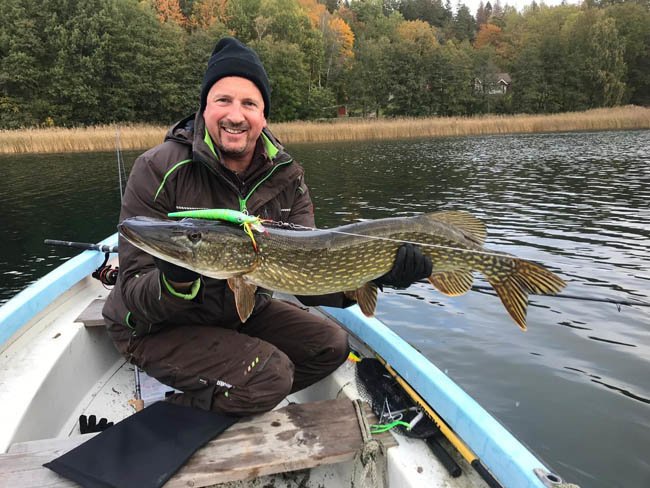
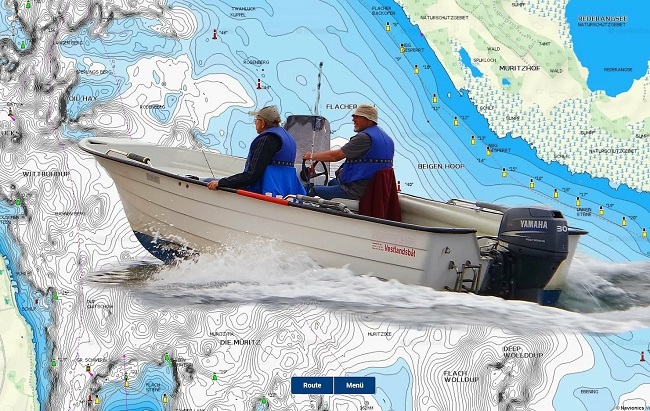
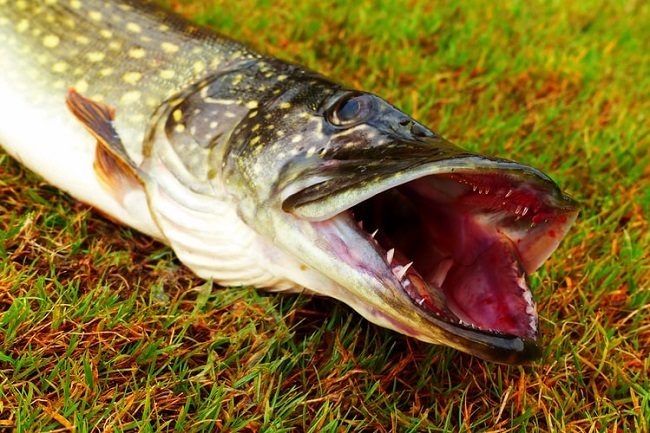
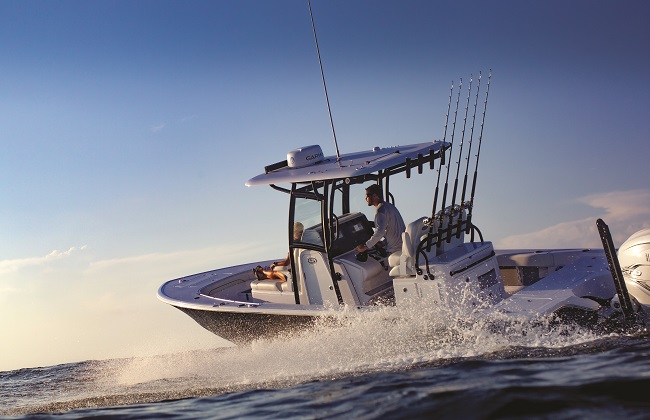
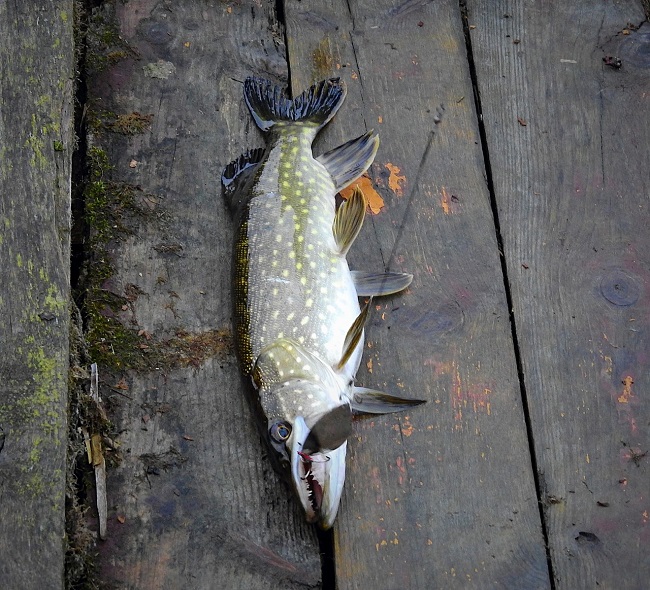
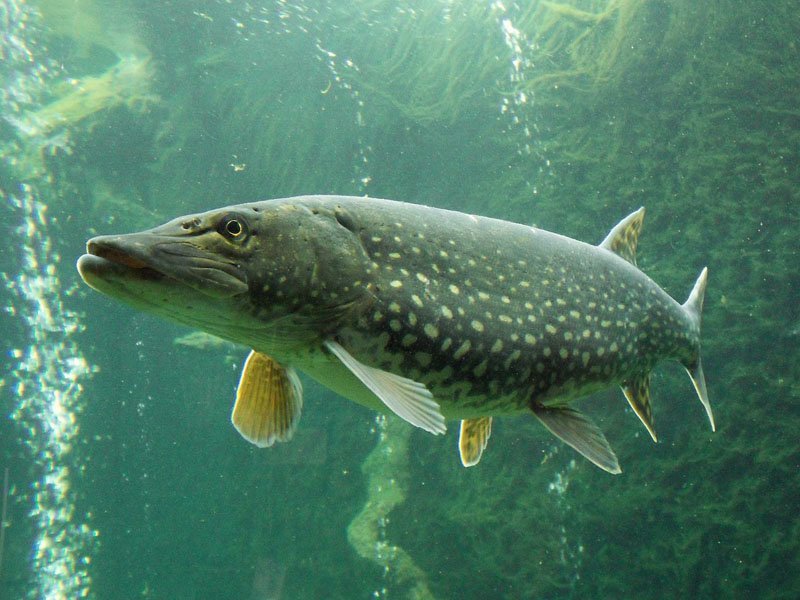
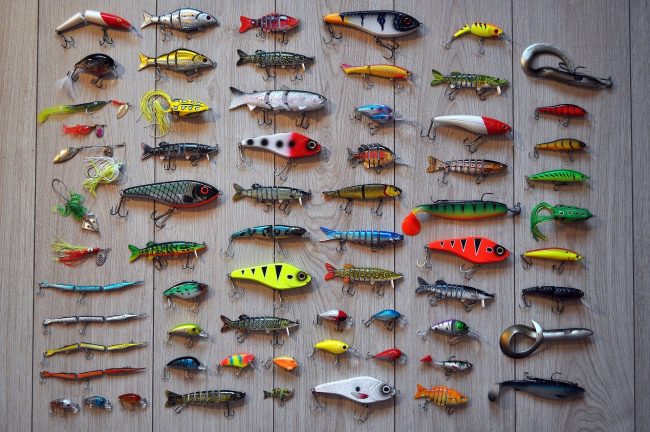
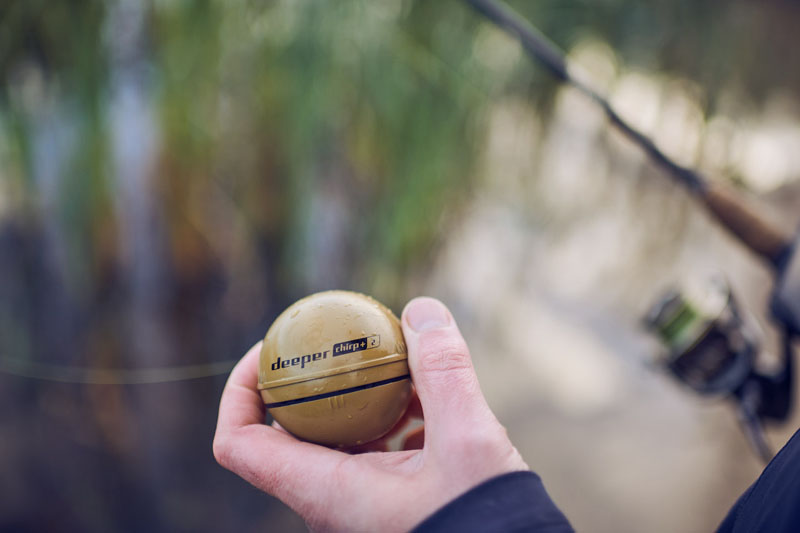

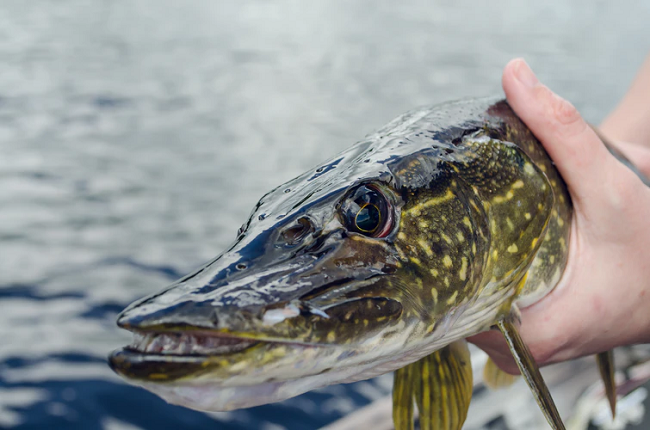
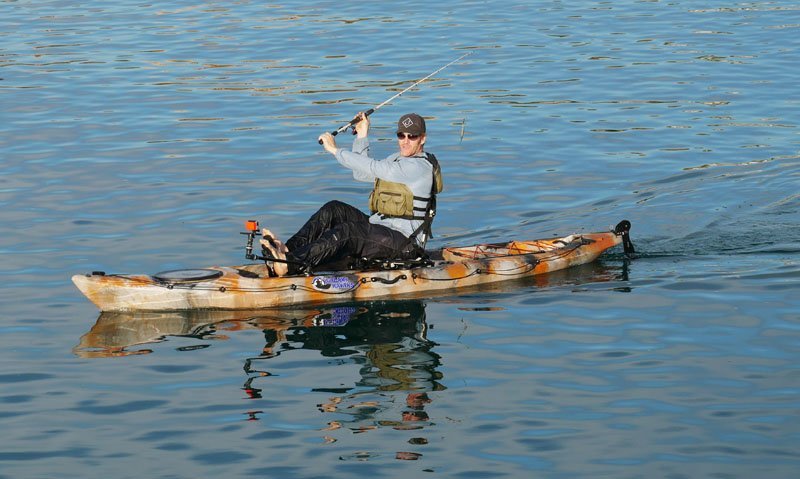

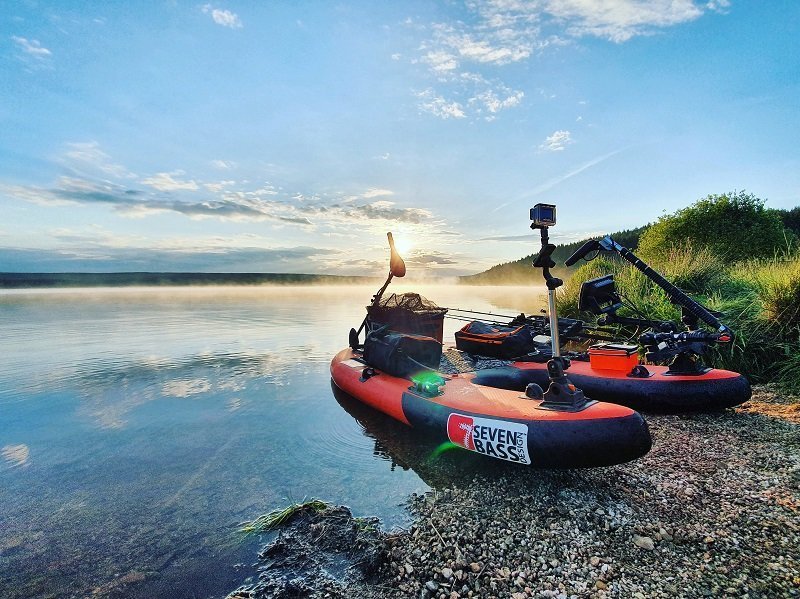
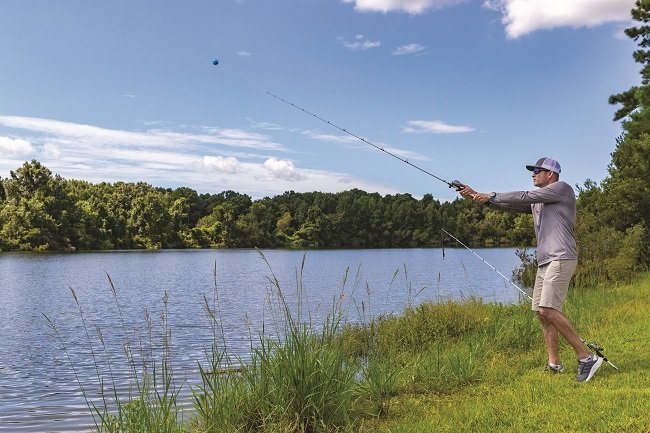
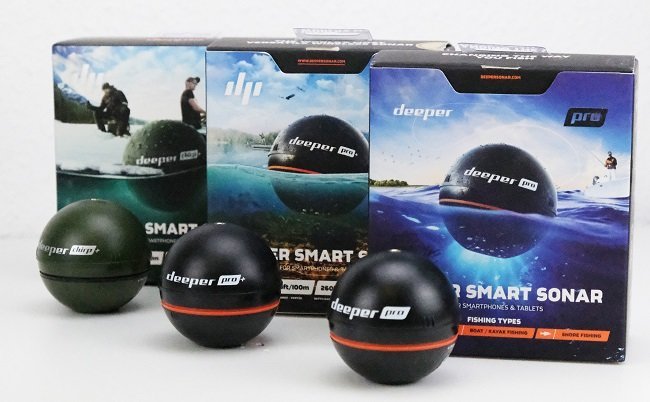

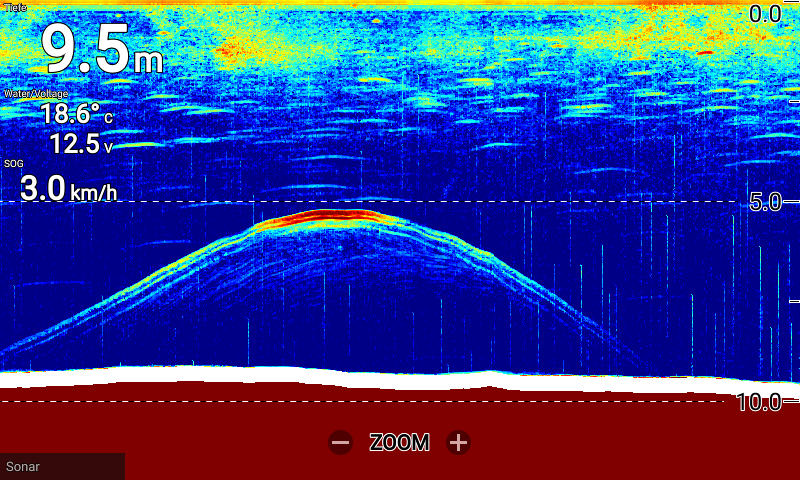
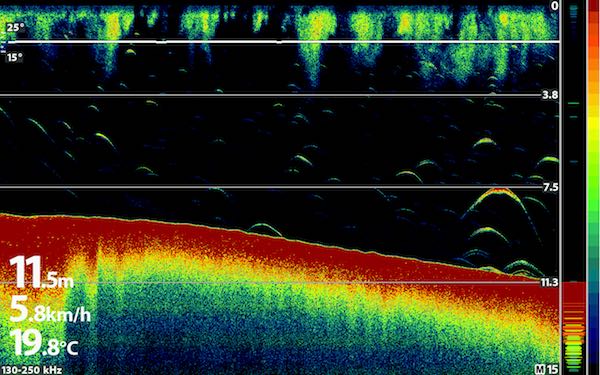
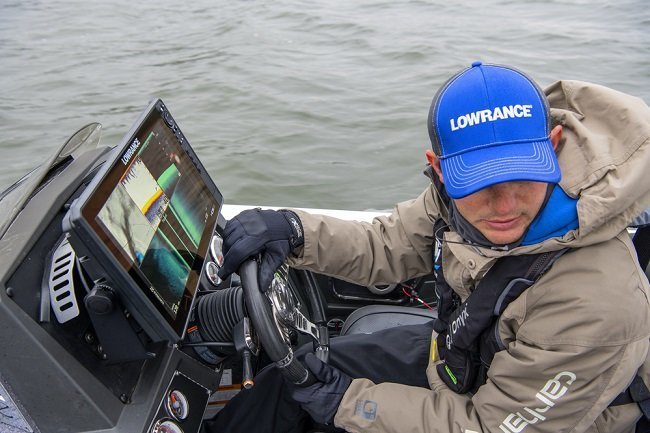
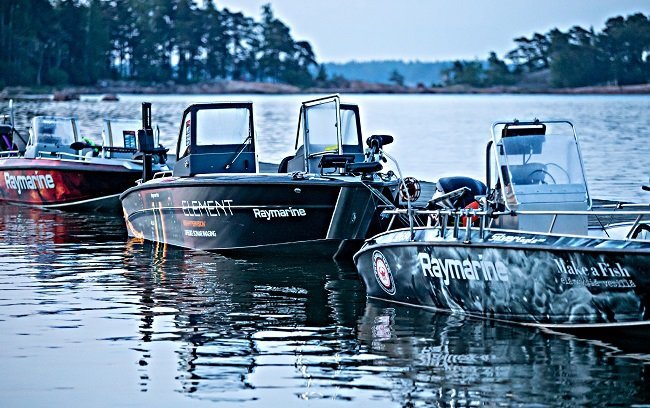
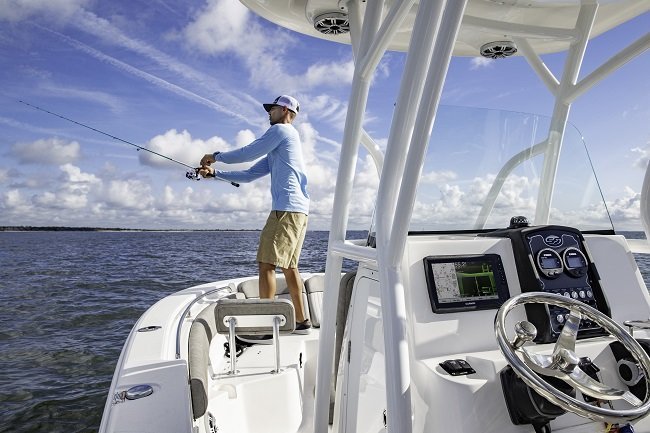


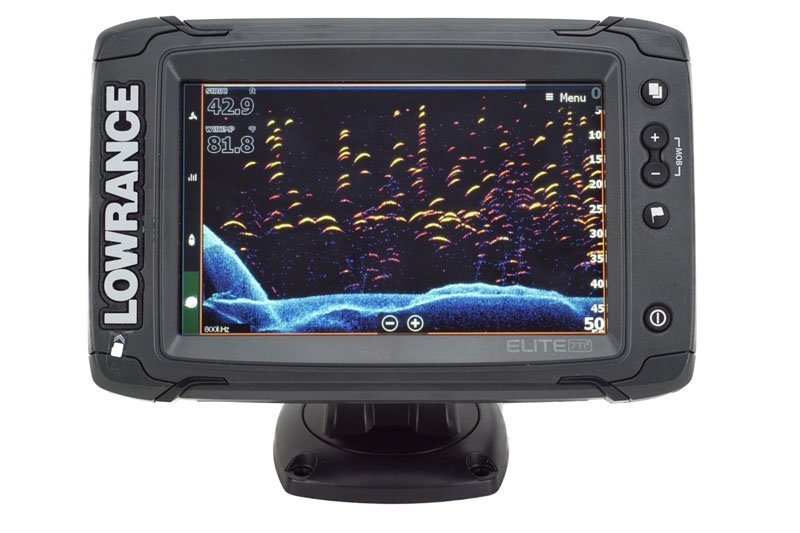
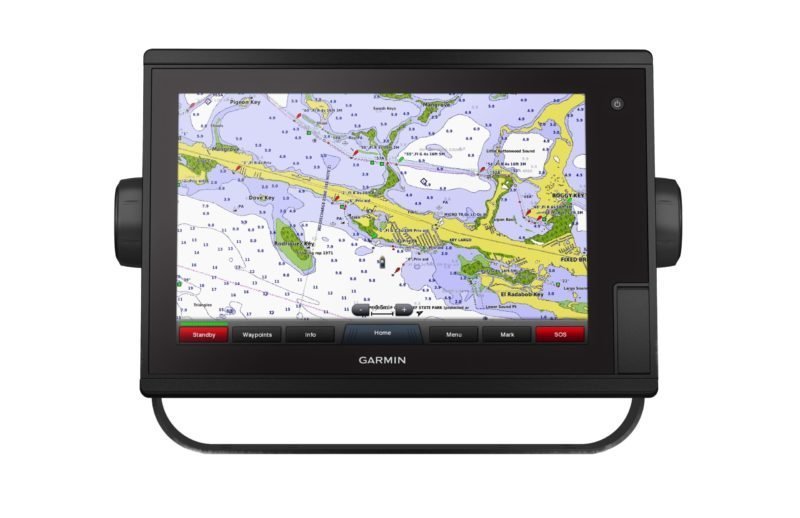

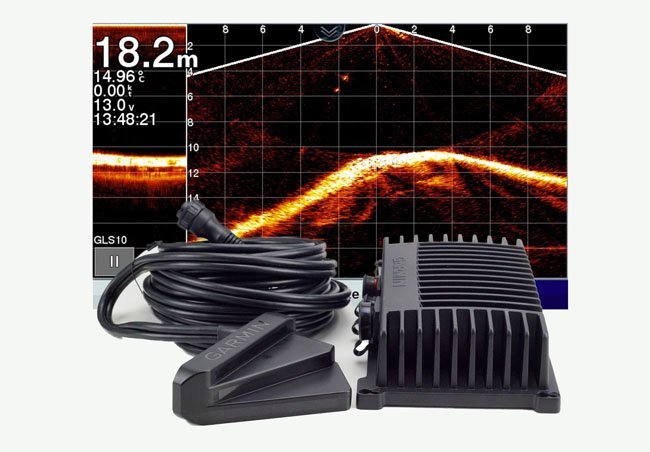
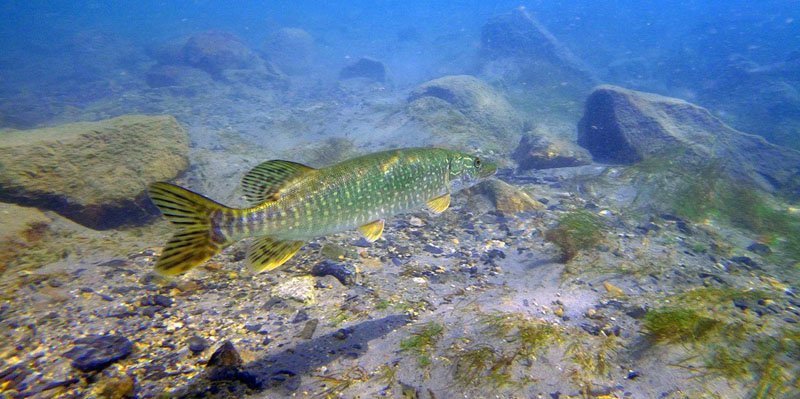
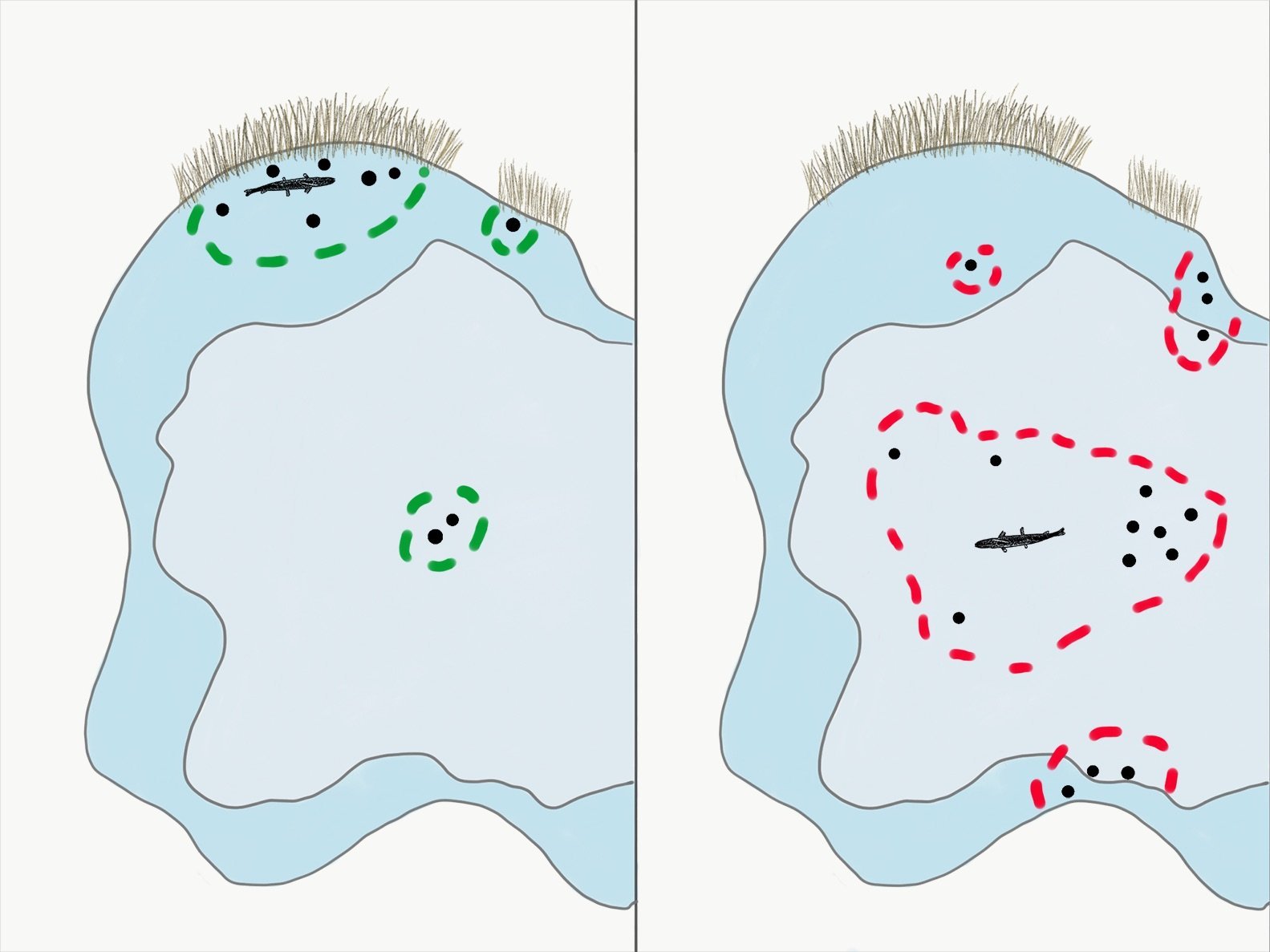
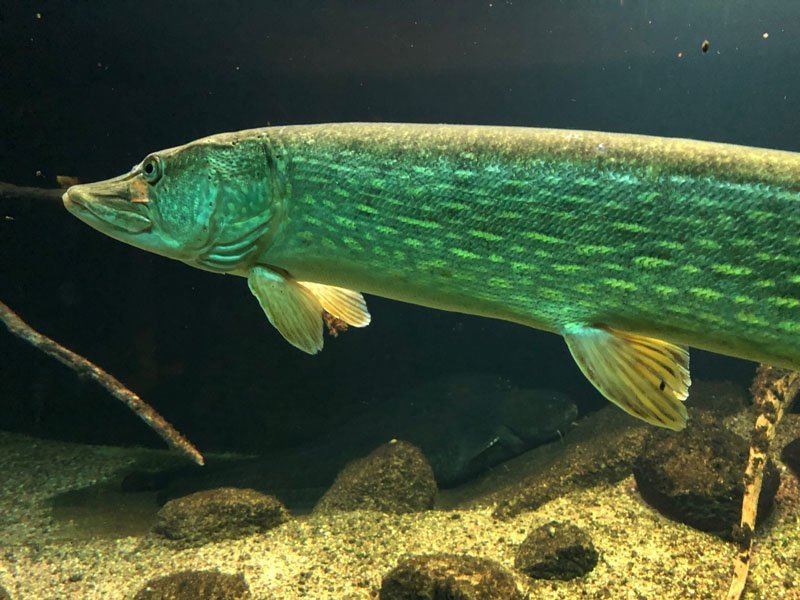
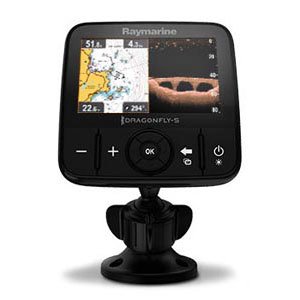
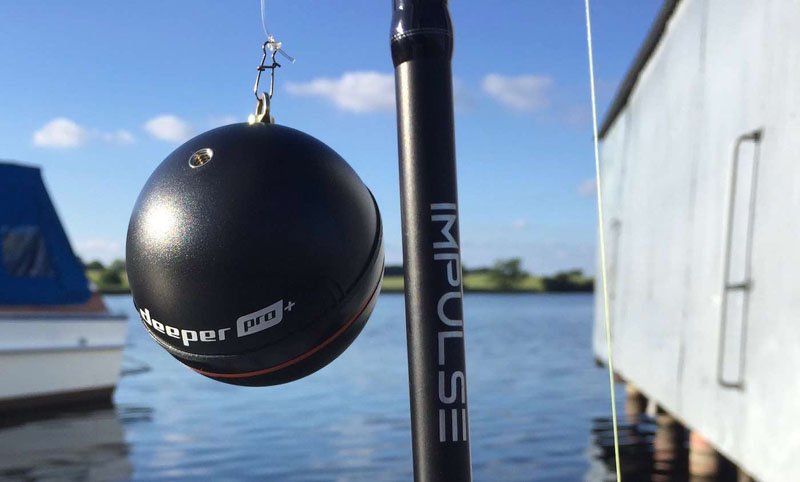
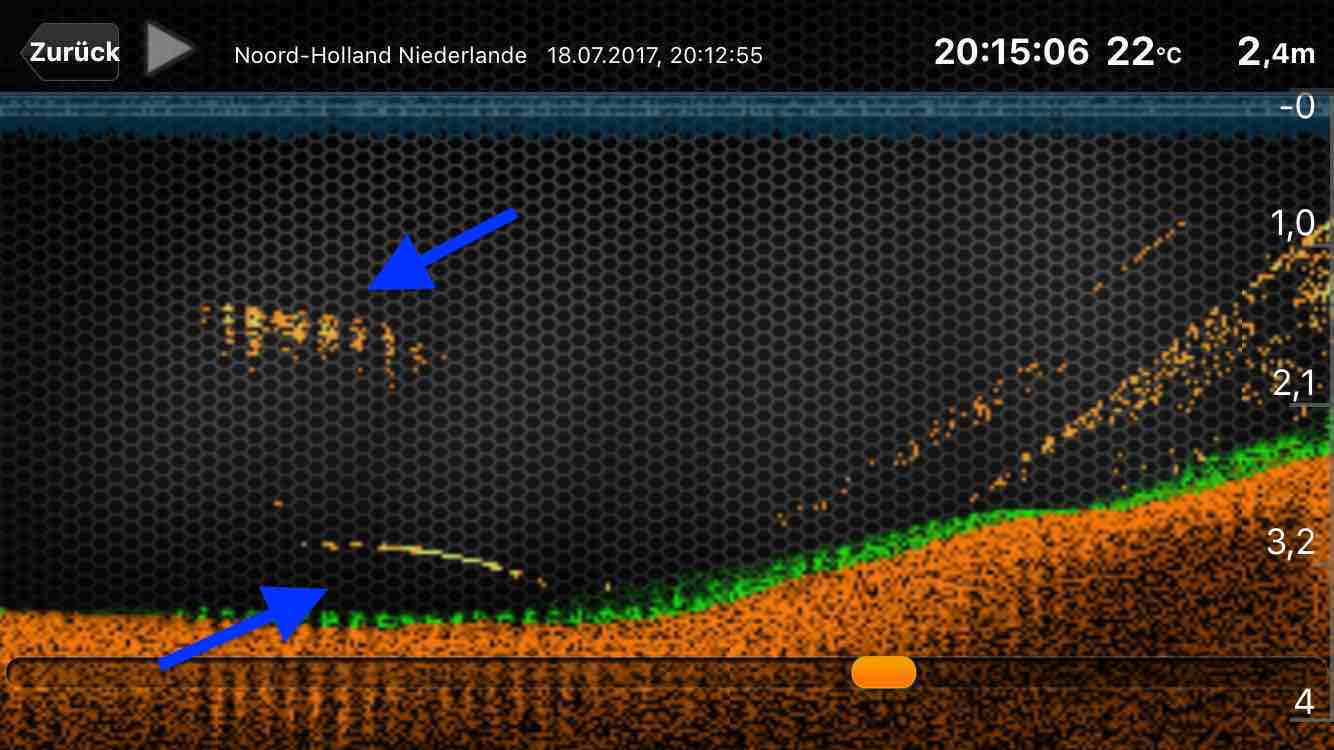
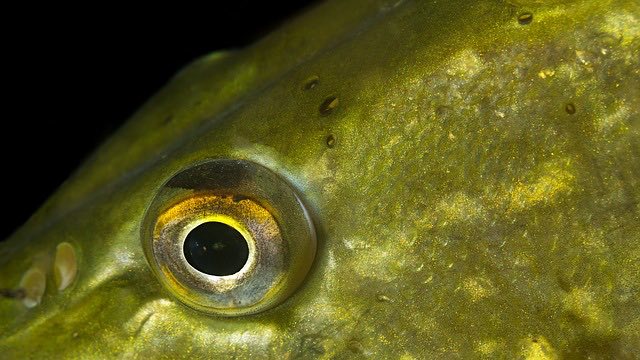


Martin
Garry Gregg
Andreas Eden
Martin
Claus Erhard
Dieter Gundacker
Kurt Sattler
Mirko
Holzblinker
Bruno
Stefan
Fischfreund
Paul KraUS
barney1at
Michael Hügel
frankadam67
Thomas Asamer
Andre Scholz
Manfred Parbs
Fabius Voigt
Julia
Pascal Schlenker
Heinz-Otto Schoel
Andreas Hillers
Stephandargel
Rolf Wilde
Blankmaster
Rudolf Knopf
markus s
Mitja
schoenfeld.oli
Robert Häusler
Martin
Edi Brader
lusox
Stefan Fischer
Lasse Wiedenhöft
Johann Burgstaller
Barschhunter
Andre Scholz
Andreas F.
Pascal Kreutzmann
Ralf B.
Bickes
opto
Adrian Drzezla
Evgenij
Daniel
Jörg
Dirk Lindner
Jörg Thielke
Stefan Klingbeil
Jörg Rolle
Philipp
Ben
Nico Drabner
Kuhnert Giso
David Götze
Peter
Ben
Kantor Alfred (Hatschi)
Patrick
Tacklefever
Andreas
Wolfgang Konter
Catchmaster
Jörg Rolle